

Pressed Ephemera
A Critical Look into
“What Used to Be”
︎
Pressed Ephemera examines the intention, meaning, and care behind printed precedents. It is a research and process based project that begins with an exploration of how history has affected the ideals and aesthetics of print design in each time period. The project then moves into the most meaningful and important aspect: the making & the experience. In order to capture the limitations of the past, I went on a journey of following old processes. Each period and its printing method has been meticulously researched, explored, and printed with different materials. The results are a series of intriguing and handmade ephemera.
In this project page, I will take you through Ikigai Exercises that led me into my project, to creating Printed History pieces that take on the design styles of each period, and the Old Processes that show my process and experience of making. The Multimedia Posters are large posters combining the Printed History & Experience of Making, and the handmade Process Pieces & Tags are displayed. The Postcards are takeways for the project that give a sneak peak into the design styles and experiences of making through each process.
The final project piece are two Pressed Ephemera metal stamps that I made for the foil stamping process! This logomark is stamped on my final handbound Process Books, and risograph Journals and Pamphlets that concluded my project.
I hope you will enjoy diving back to a time when creation was well thought out, cared for, and meaningful. Hopefully you will find appreciation and curiosity in being immersed in all of the printed ephemera, as much as I did.
In this project page, I will take you through Ikigai Exercises that led me into my project, to creating Printed History pieces that take on the design styles of each period, and the Old Processes that show my process and experience of making. The Multimedia Posters are large posters combining the Printed History & Experience of Making, and the handmade Process Pieces & Tags are displayed. The Postcards are takeways for the project that give a sneak peak into the design styles and experiences of making through each process.
The final project piece are two Pressed Ephemera metal stamps that I made for the foil stamping process! This logomark is stamped on my final handbound Process Books, and risograph Journals and Pamphlets that concluded my project.
I hope you will enjoy diving back to a time when creation was well thought out, cared for, and meaningful. Hopefully you will find appreciation and curiosity in being immersed in all of the printed ephemera, as much as I did.
View the presentation here
Read the process books here: Green & Metallic
Read the journal here: Digital & Risograph
Read the pamphlet here
Grad Thesis
Print, Handmade Processes, Research & Process,
Typography, Creative Direction,
Critical Design,
Exhibition Design, Experience Design
Core Typeface
— Adobe Jenson Pro: Robert Slimbach, based on Nicolas Jenson (1470)metal stamps: magnesium die + aluminum block
foil stamper · assorted metallic foils

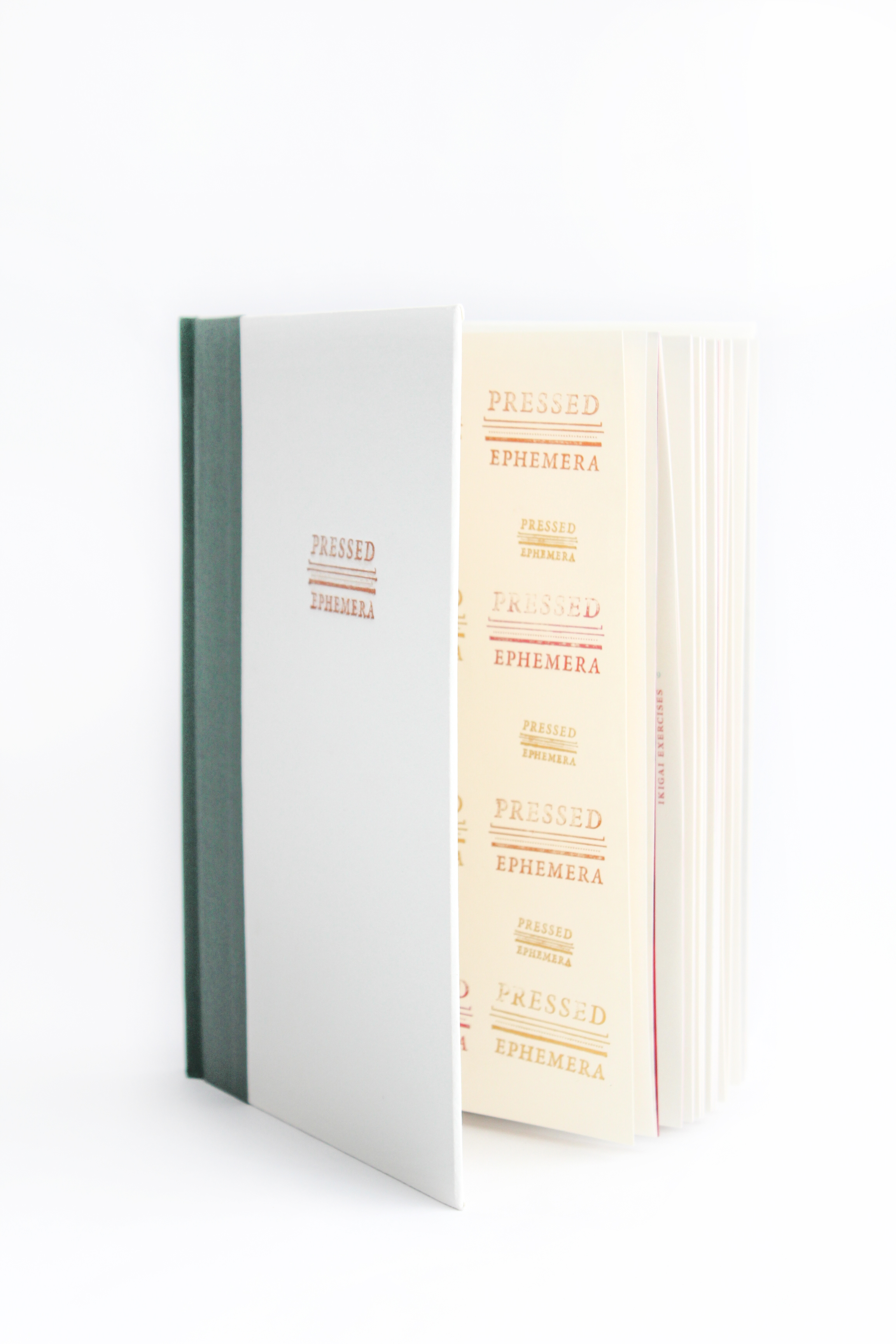

Ikigai Exercises
Below are four project exercises aimed at exploring my thesis idea and diving right into making generatively.
Ikigai is also known as “the meaning of life”; if one succeeds in each of these four sectors then one would lead a fulfilled, rewarding, and valuable life as a whole. These mini projects helped me to to reflect on the value and importance of my project through making. Through these explorations, I became certain that I wanted to do this project.
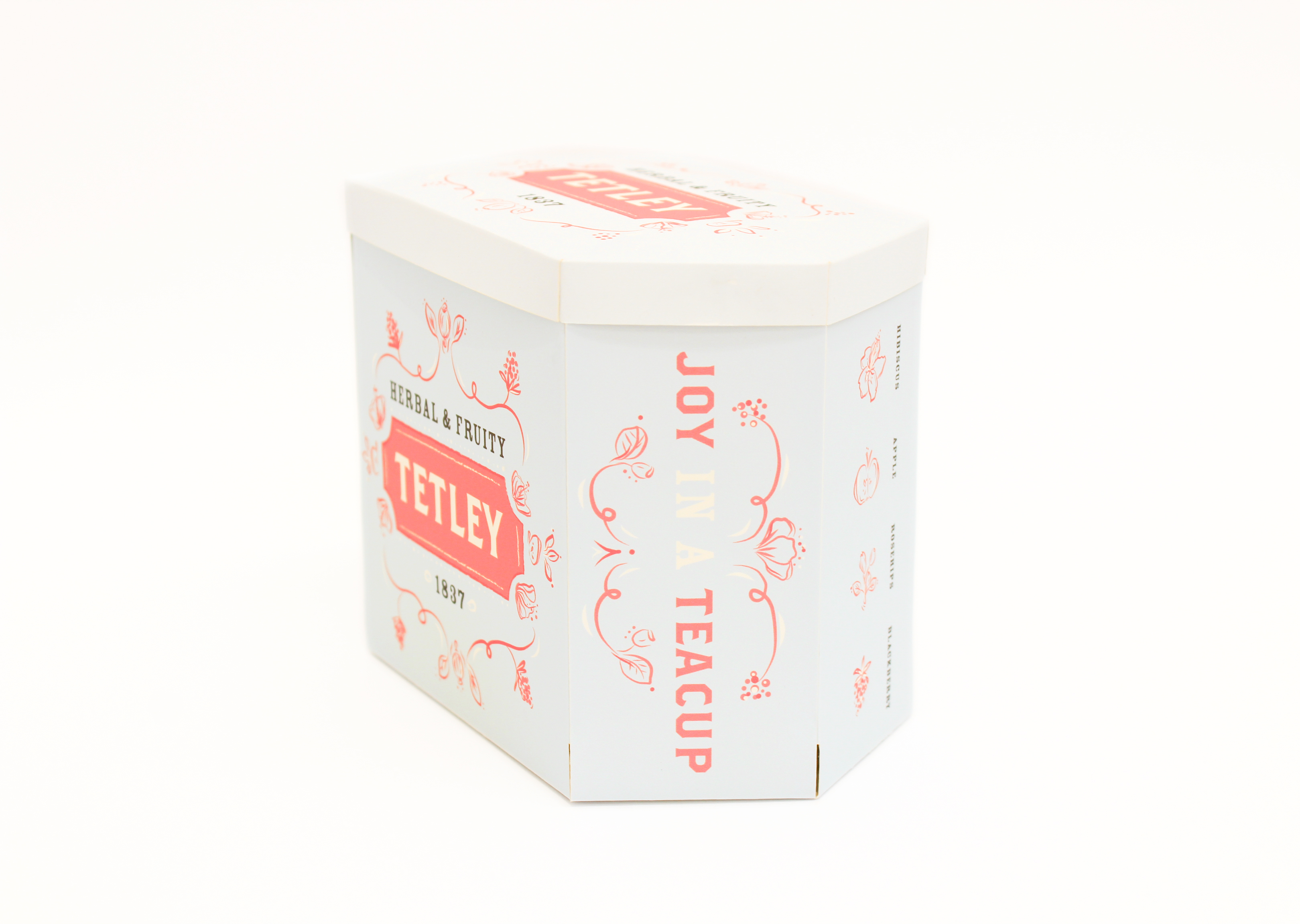
What You Love
I really love flowers and my thesis looks into design styles
of the past. So I made a floral Tetley tea box redesigned
in old style.
Paper packaging was popular in the past as
they could be reused and recycled. Tin packaging was
also used abundantly as they could be kept around the
house to hold other objects. For future explorations,
I could create a stencil and paint on a tin can or box.
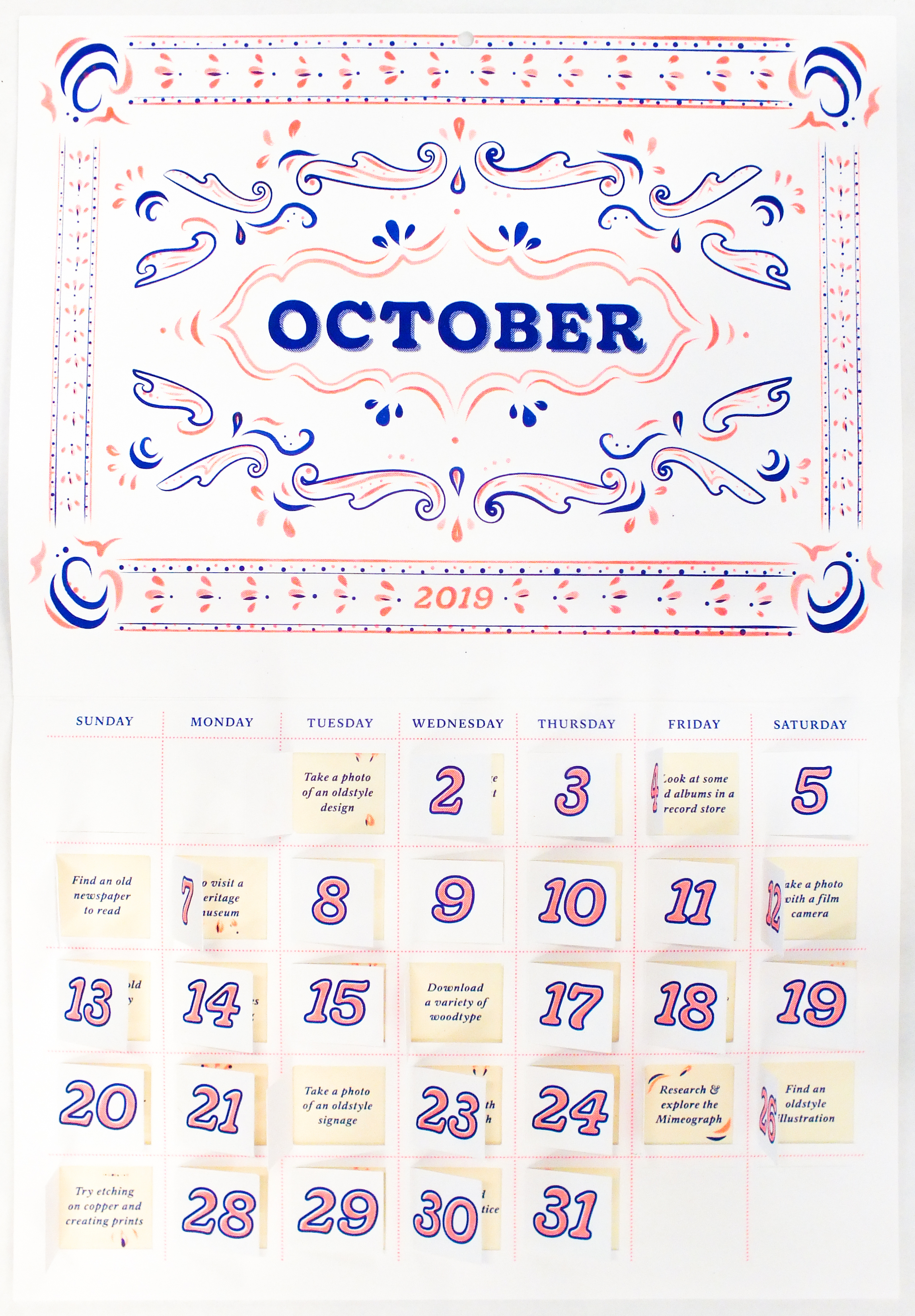
What You’re Good At
I am good at planning, organizing, and making calendars.
For this exercise, I made a daily challenge calendar of
design’s past with prompts everyday to explore this topic.
Using the form of an advent calendar, which was first made
in Germany in 1851, everyday is an open door to a new
challenge that was helping me to direct my research.

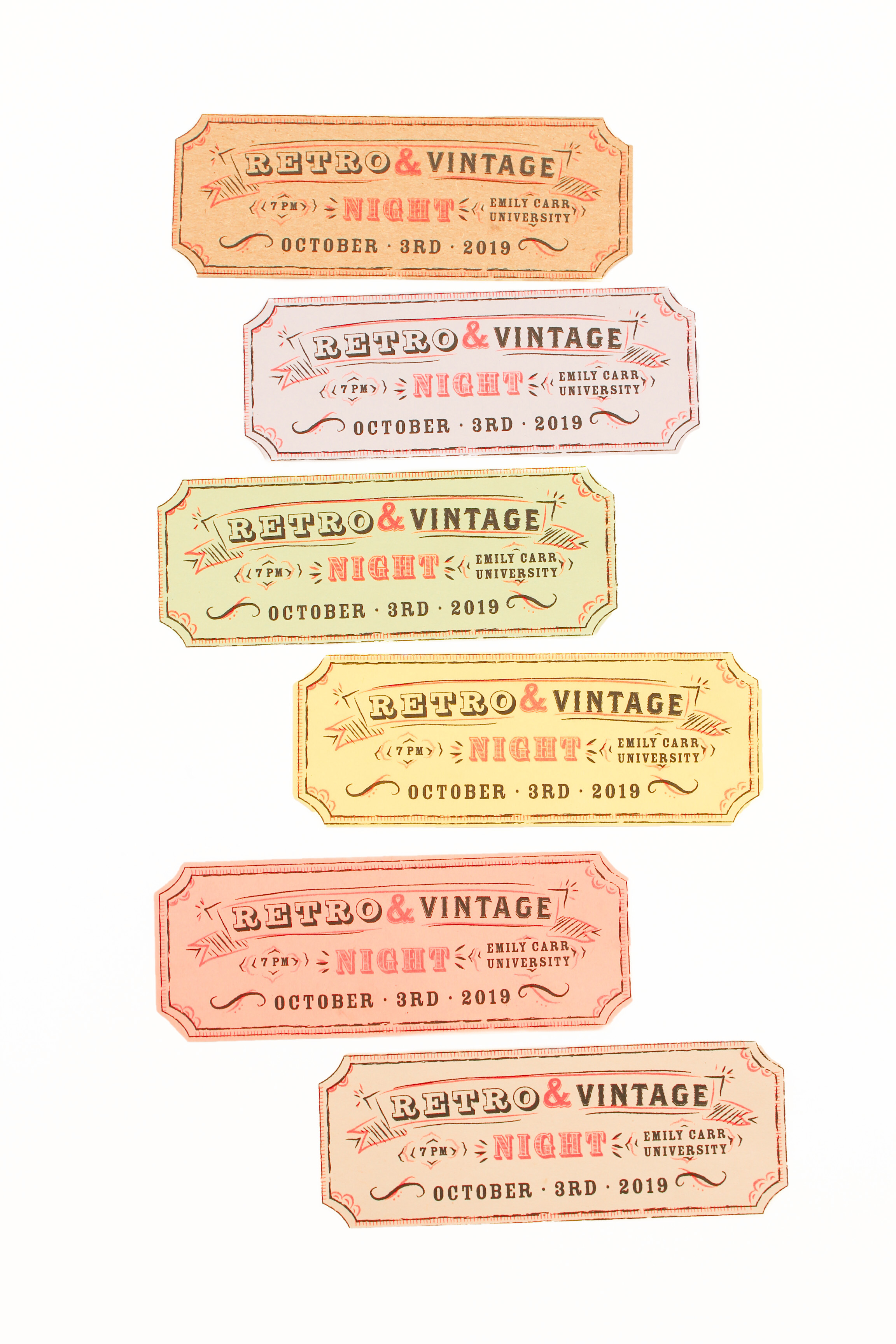


What The World Needs
When thinking about what the world needs, I realized
that much of the general public lacks appreciation and
curiosity. To generate more of this, I decided to create
a little exhibition that includes a typewriter, old books
and objects, and an interactive section with metal
type and foil stamp samples.
I made a Retro & Vintage Night poster, along with tickets
to this little event. I also made a Little Book of Oldstyle
Designs to showcase design styles through periods of time.
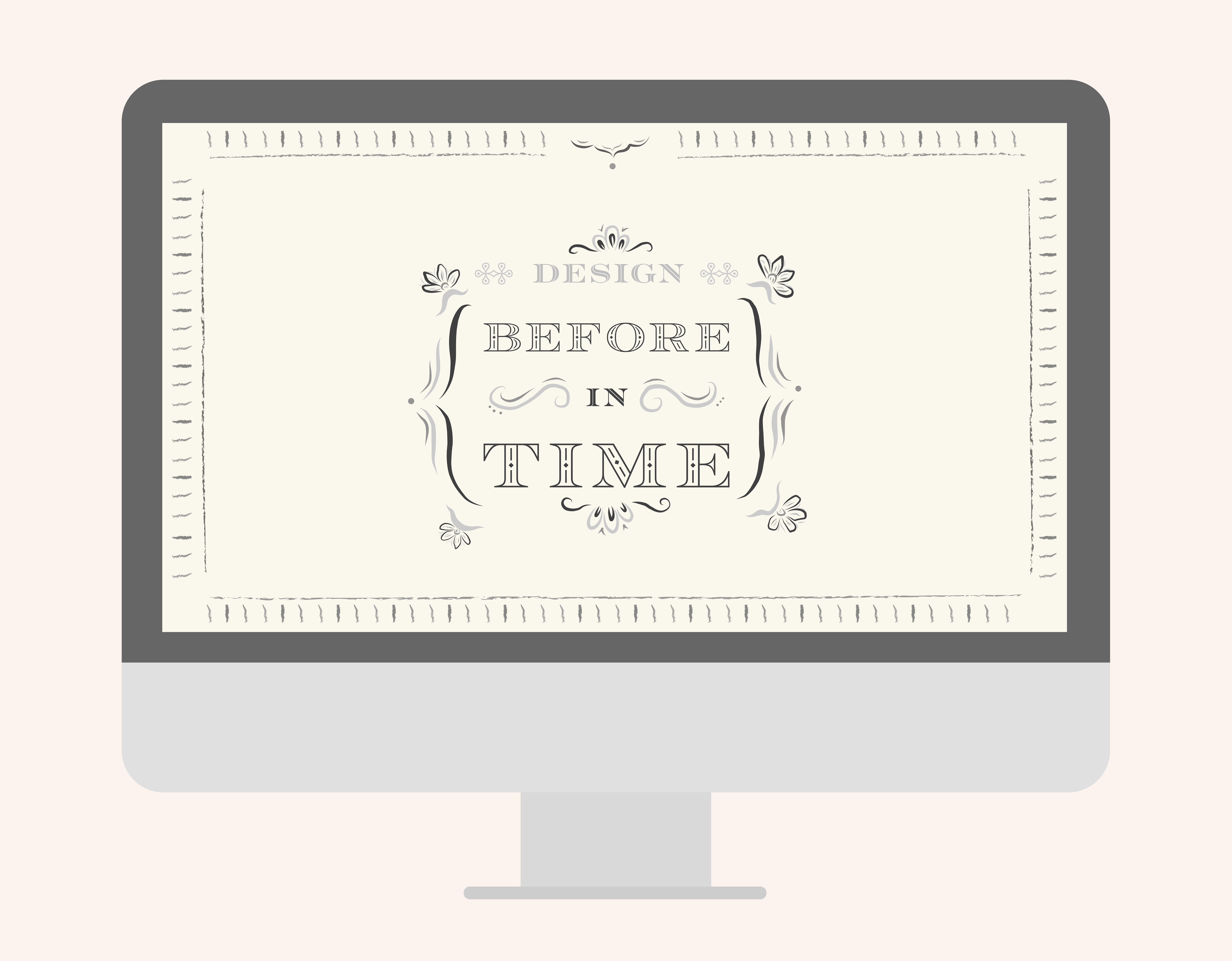
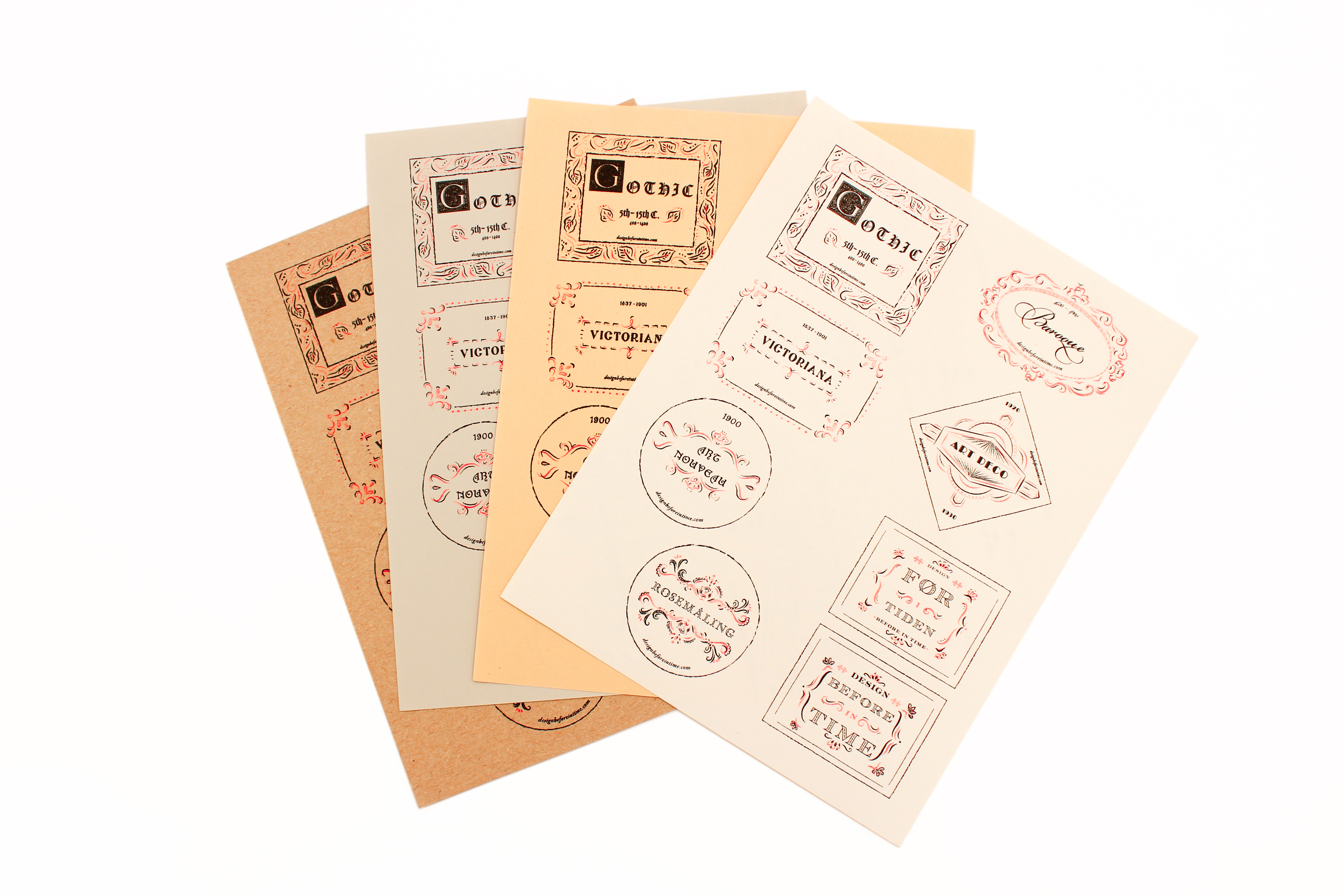
What Makes You Money
For what can me money, I was thinking about how
dissemination to a wider audience can get people to
start seeing the value in old objects and ephemera.
The website mockup I have created includes the history
of each of the periods, designed in the style of that time.
It would also have a shop section where people could
purchase old style objects and ephemera.
Printed History
These Printed History (digital laser prints) showcase the design styles and history of each period. My project timeline begins with the Renaissance period (1400-1600), through to the Enlightenment period (1700), and ends off with the Decorative Arts period (1800). Through my research, I looked into the printed forms that existed each period, designed in that context, and included its history as text for these printed pieces of ephemera.


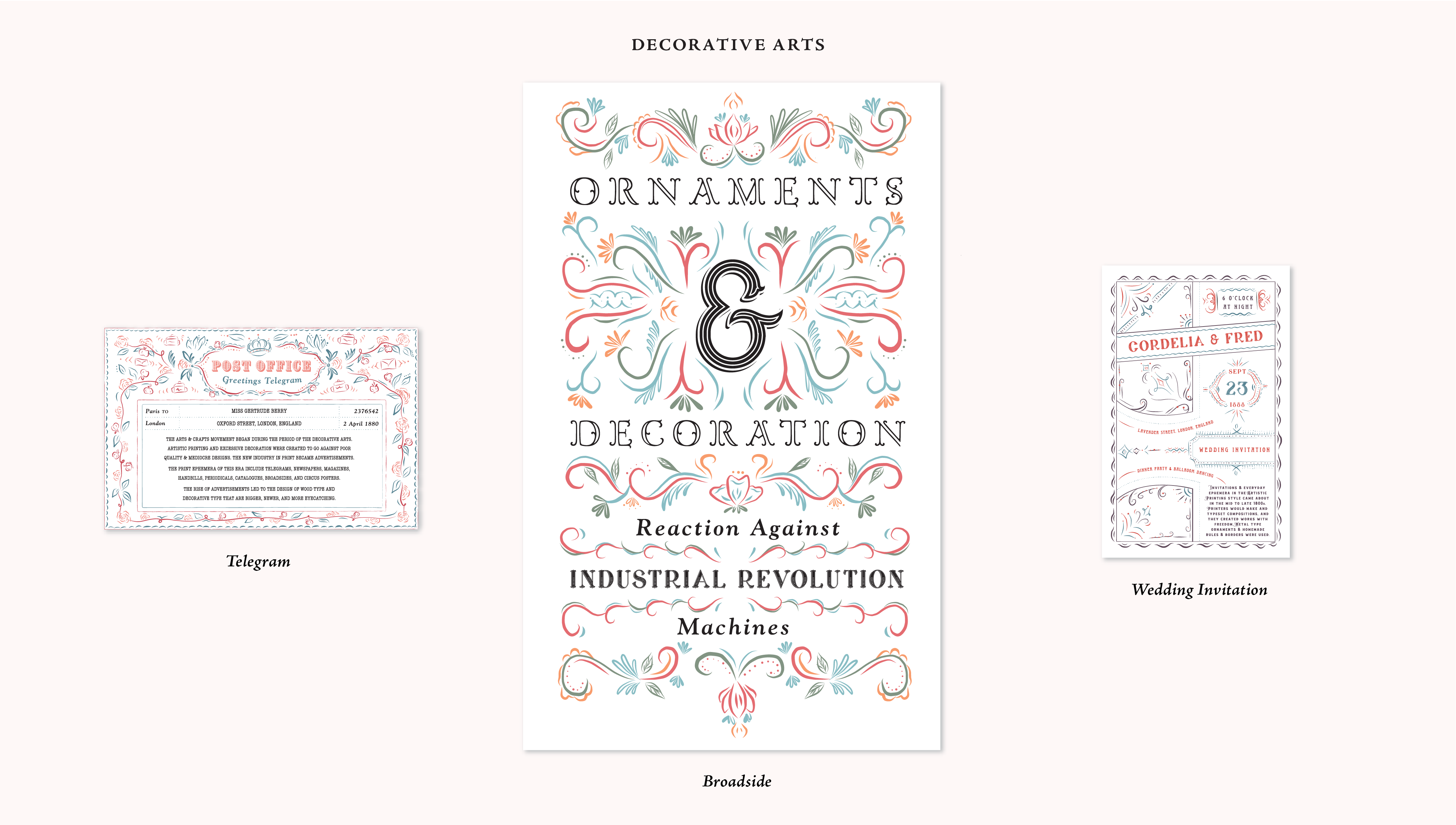
Old Processes
The Old Processes (handmade prints) display the printed history pieces that are remade by hand through Letterpress & Etching, Silkscreen, and Cyanotype. Through my experience of making, I learned to take time and to think critically about each design decision I was making. I became more careful and thoughtful in my work throughout all of these processes.
Letterpress & Etching · Process

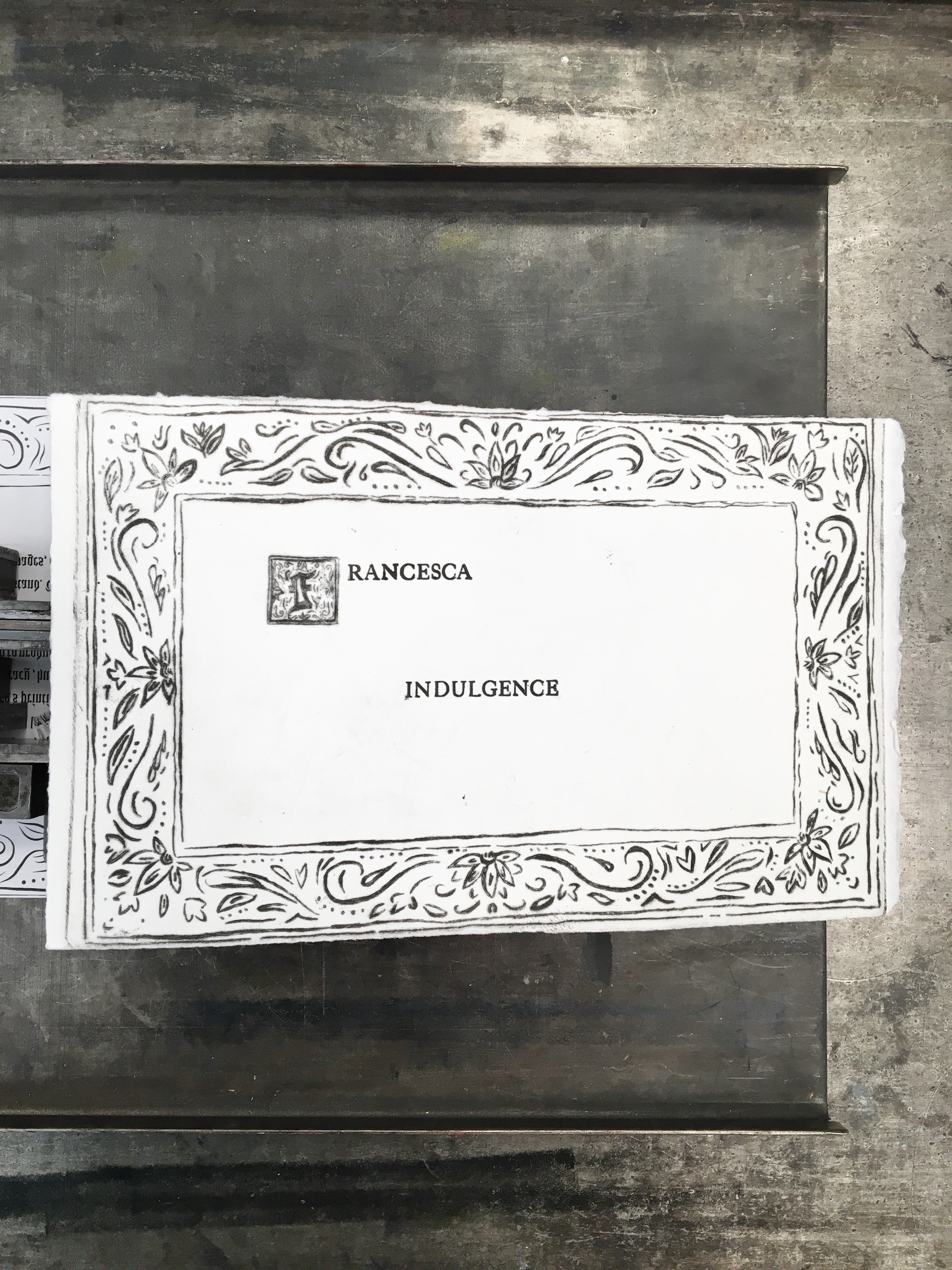
Silkscreen · Process
Cyanotype · Process
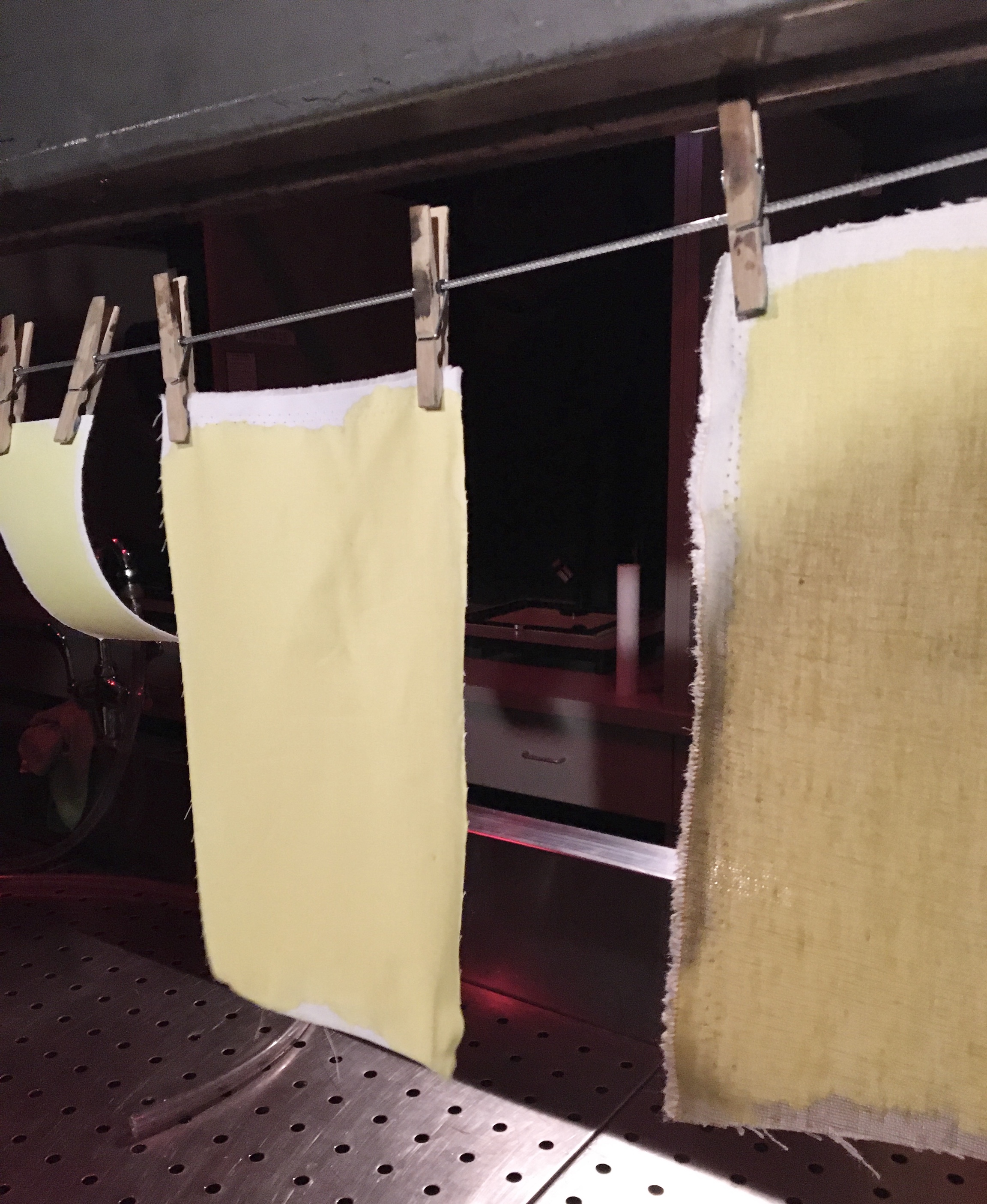

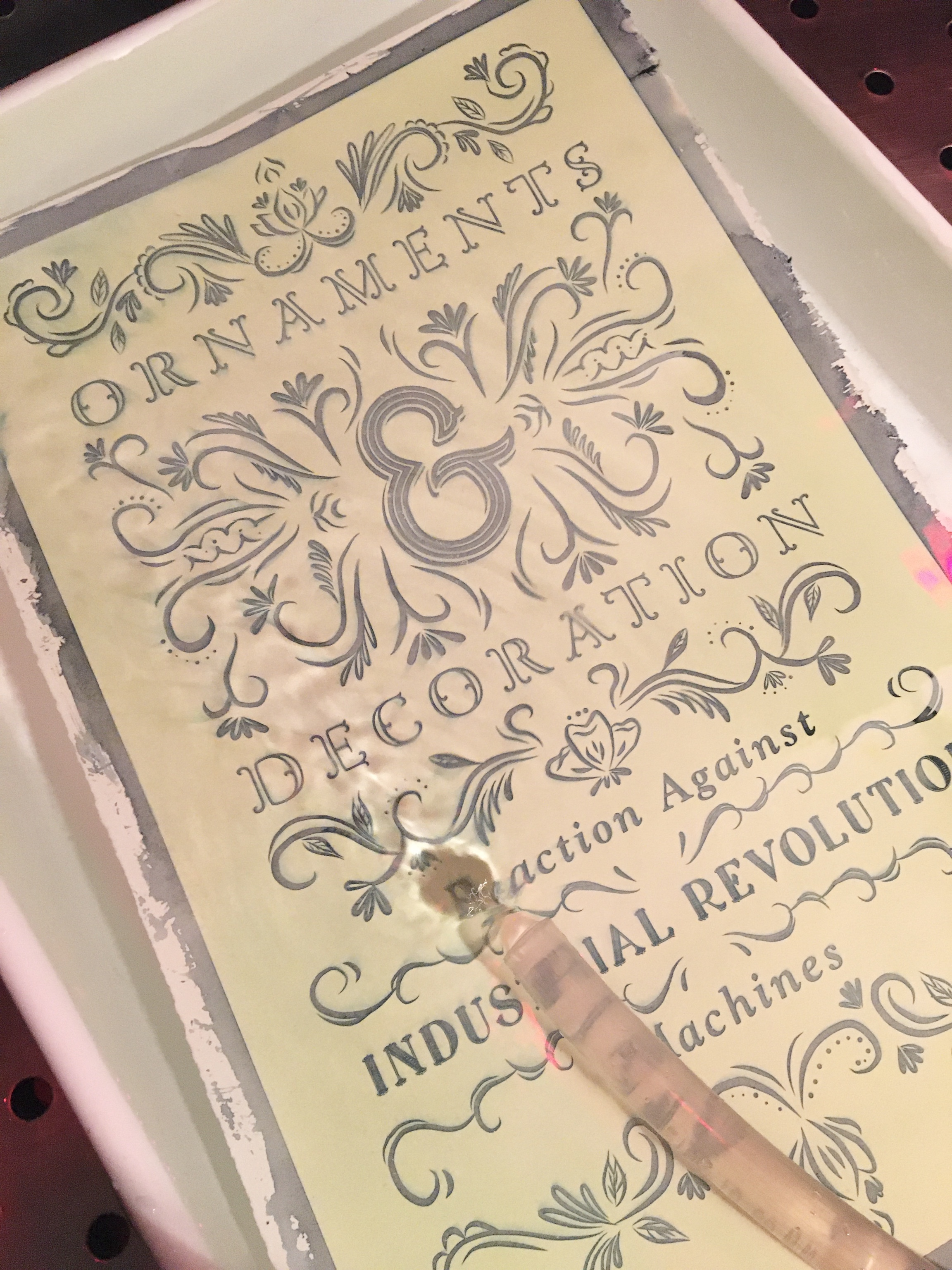
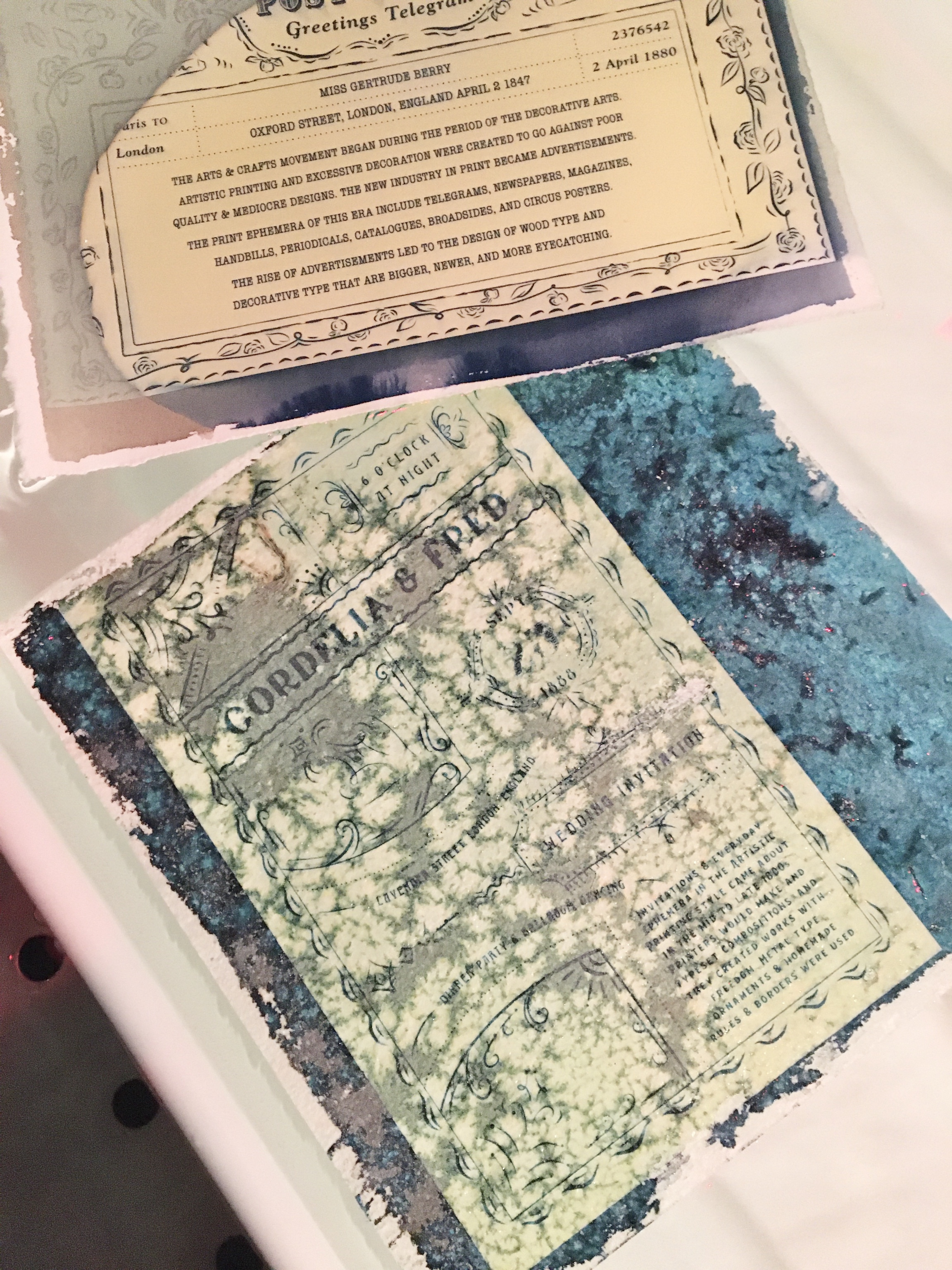
Posters & Process Pieces + Tags
These multimedia posters invite you to interact and engage with each period and their handmade prints! The process pieces + tags will take you through numerous iterations, and they embrace the imperfections that are a result of these handmade processes.
Note: Many other print processes exist in each of these periods,
but these are the ones I have chosen due to accessibility and my interest.
digital prints: colour laser prints
handmade prints: letterpress & etching, silkscreen, cyanotype
Multimedia Posters



Process Pieces & Tags · Letterpress & Etching
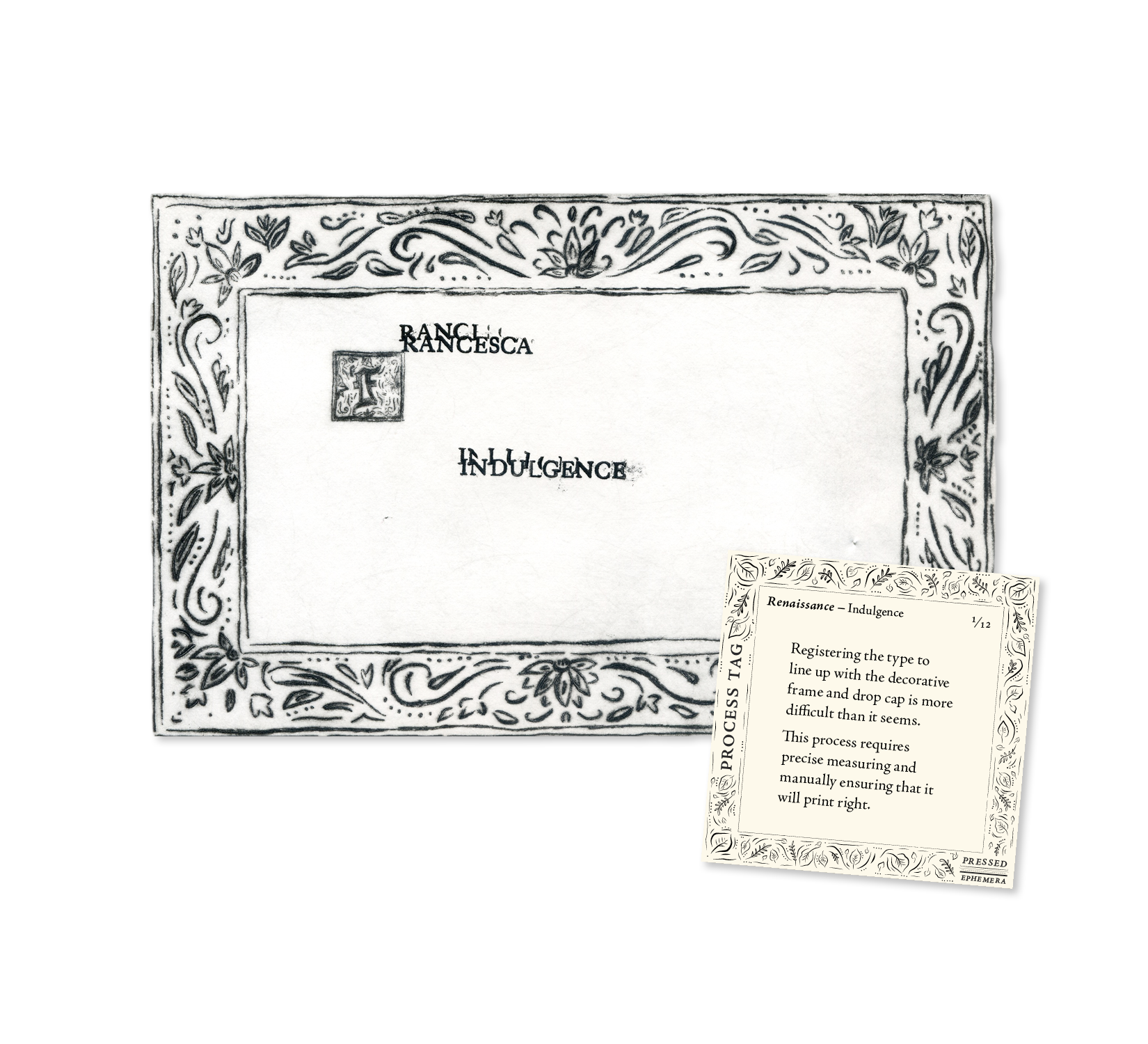
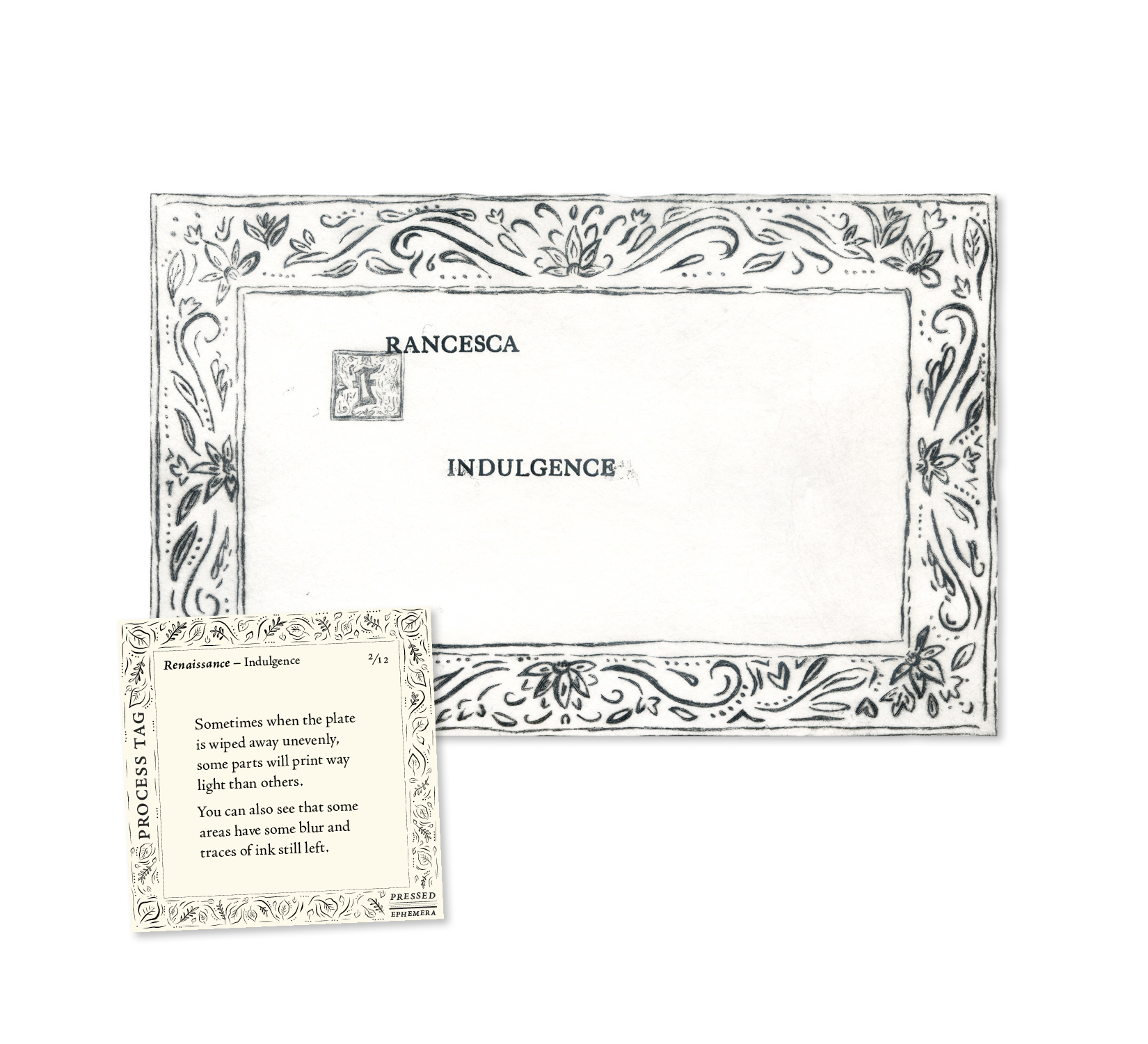
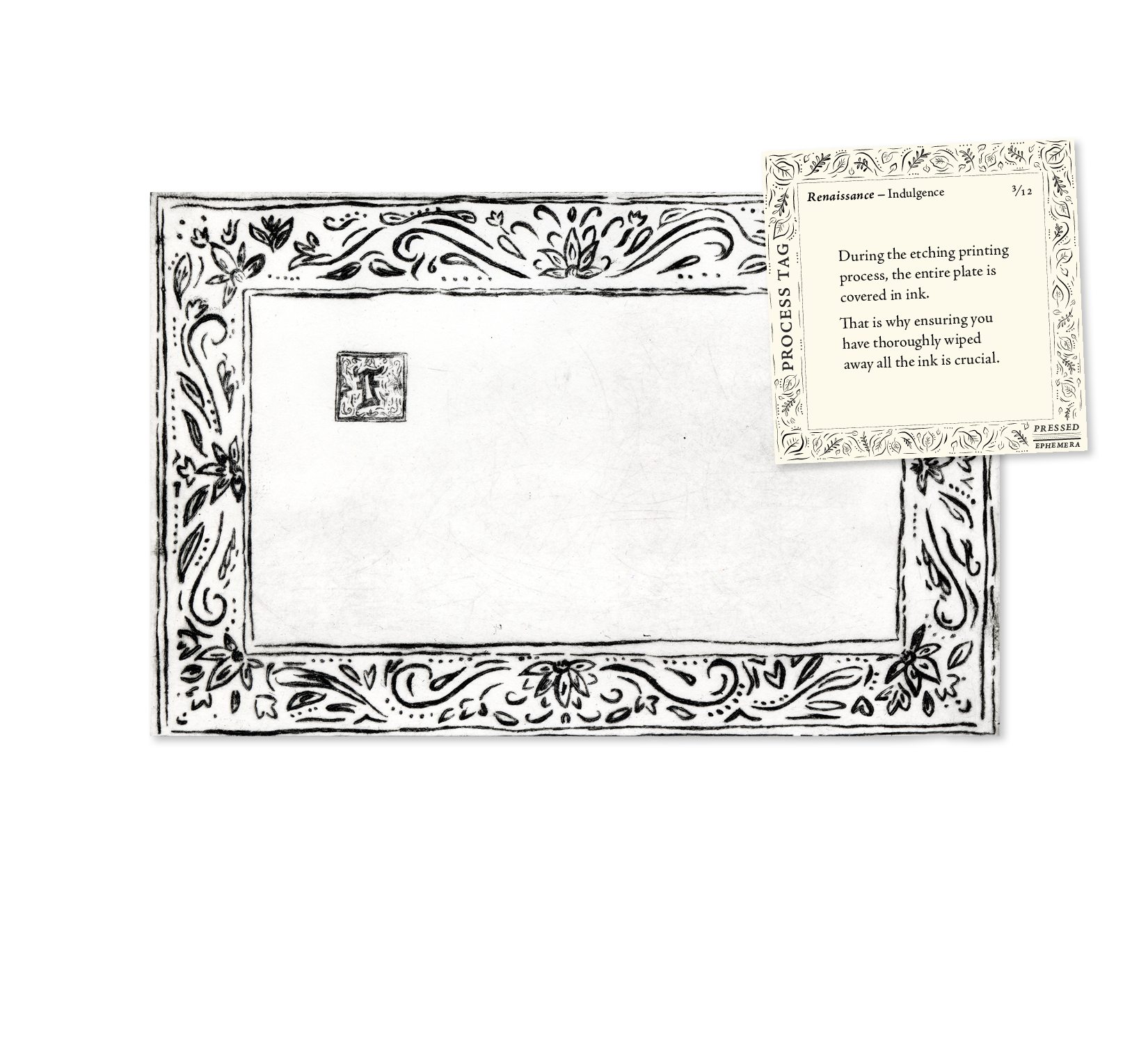

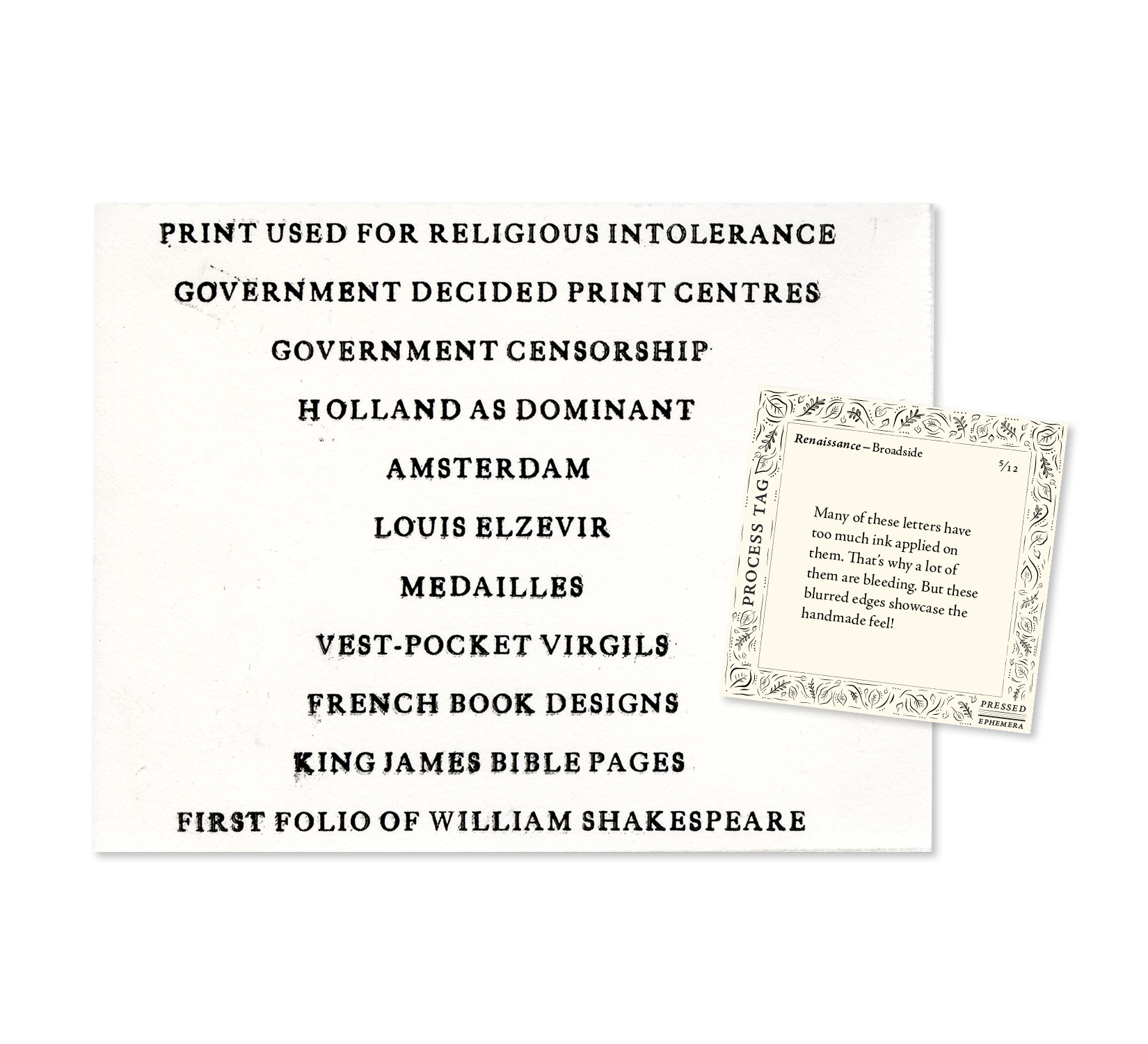

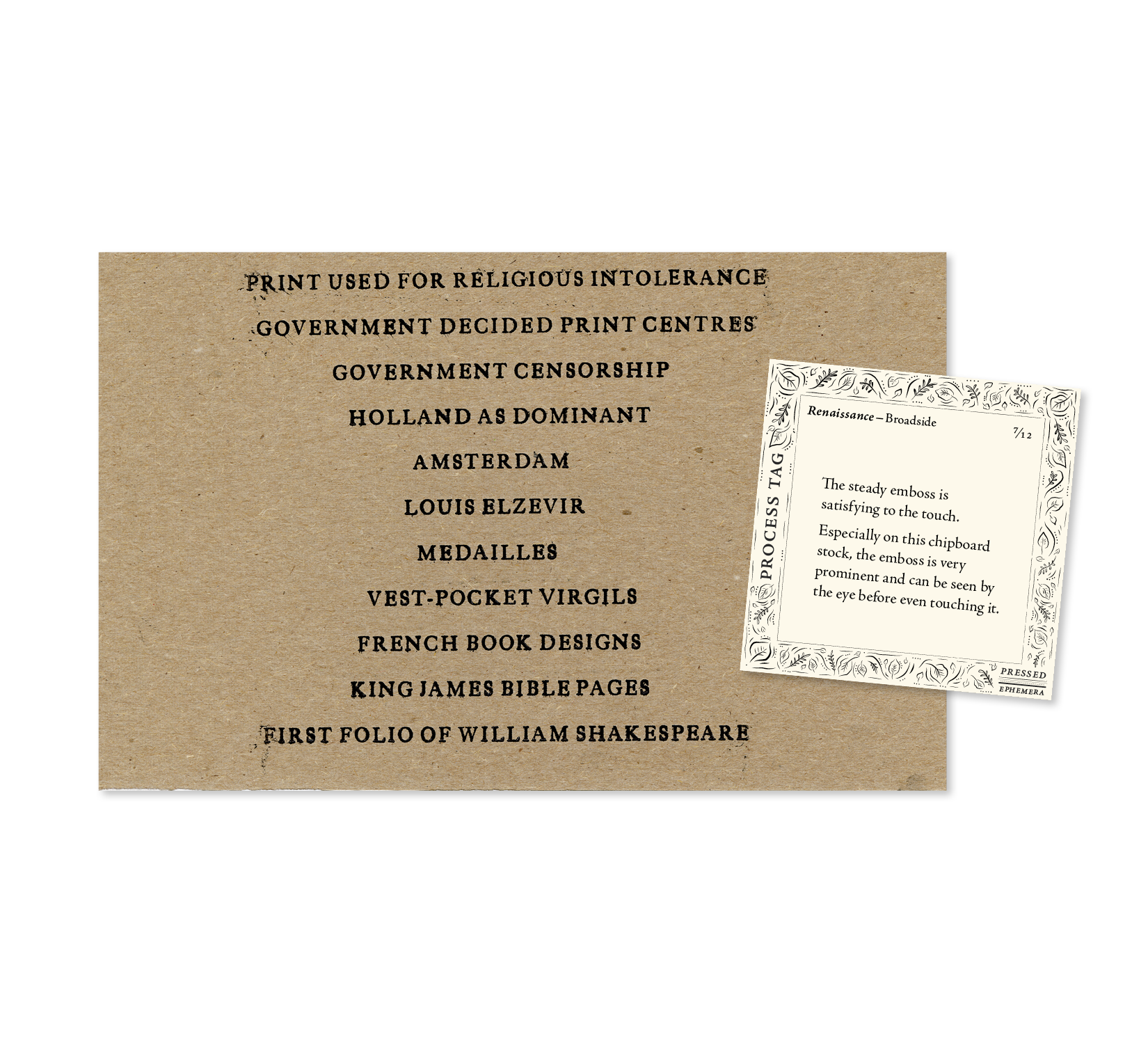
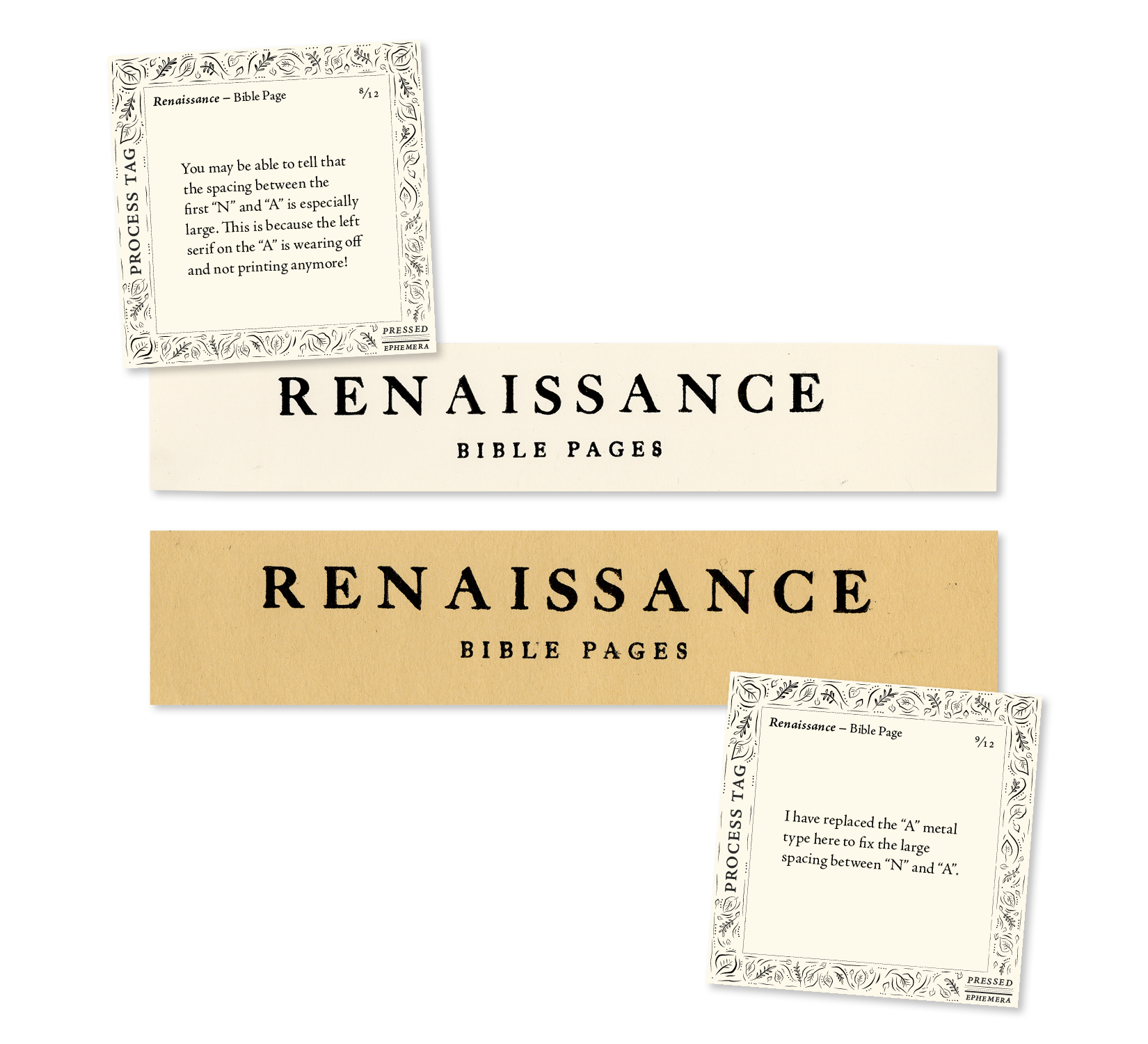
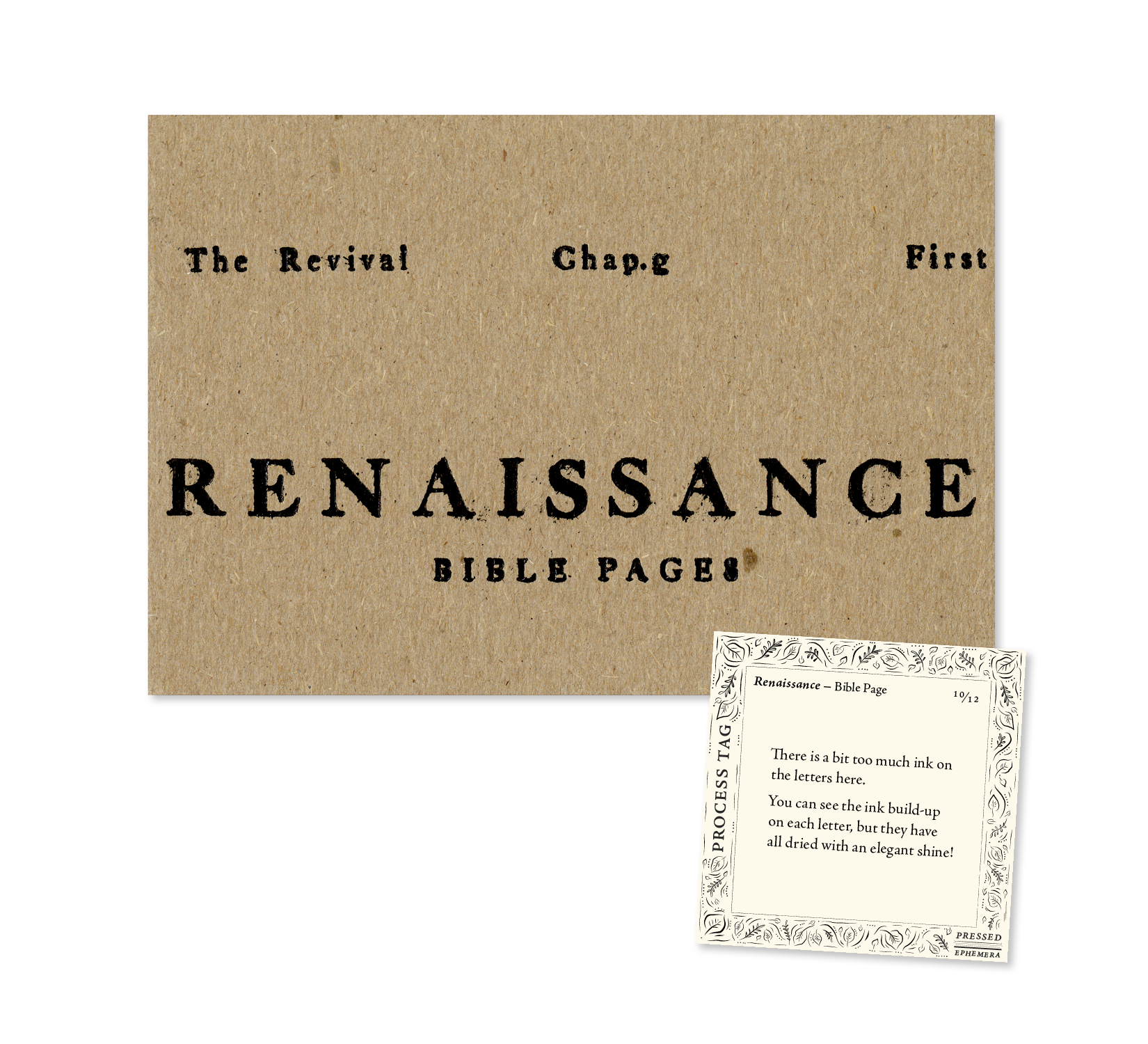
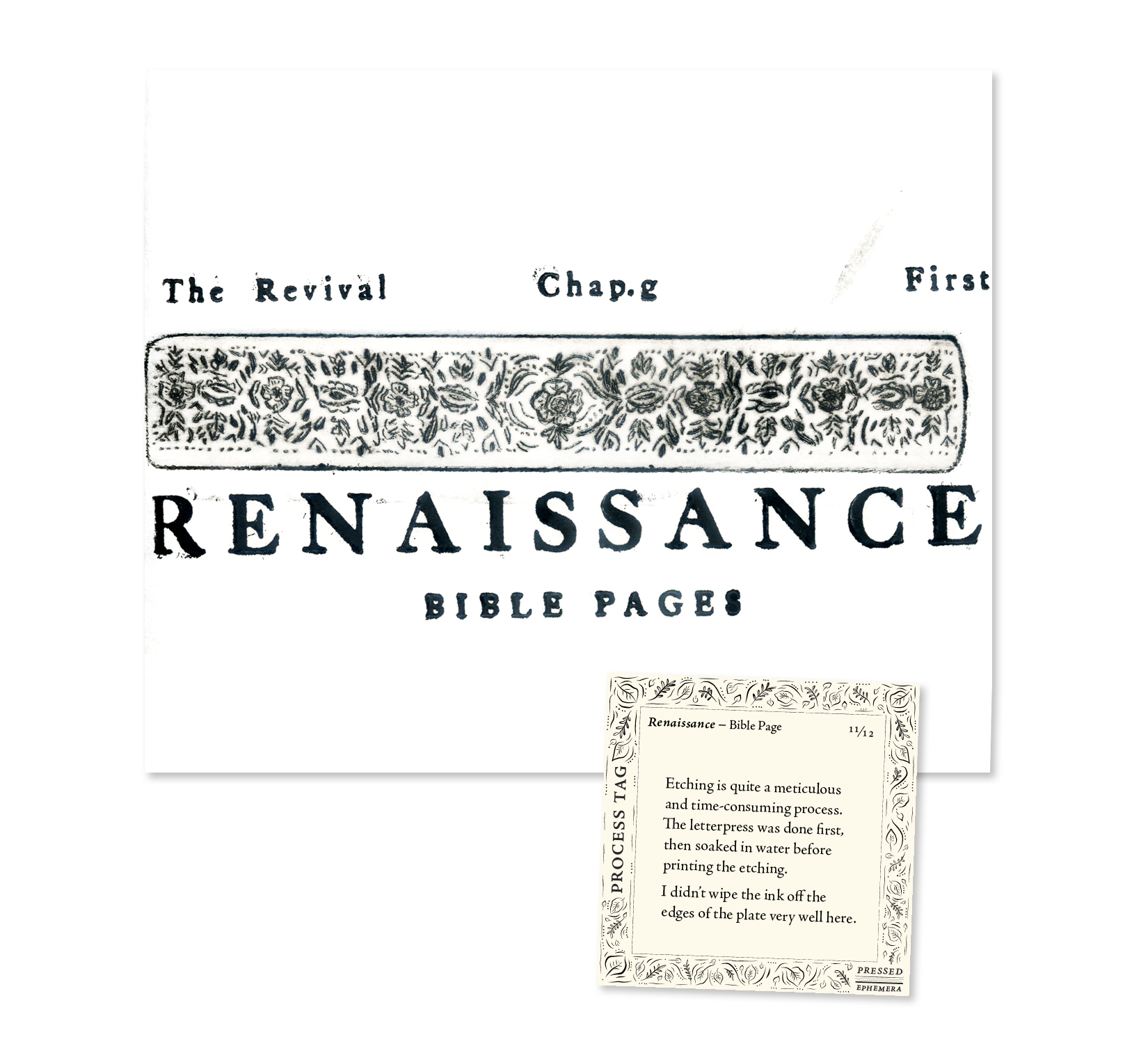

Process Piece & Tags · Silkscreen


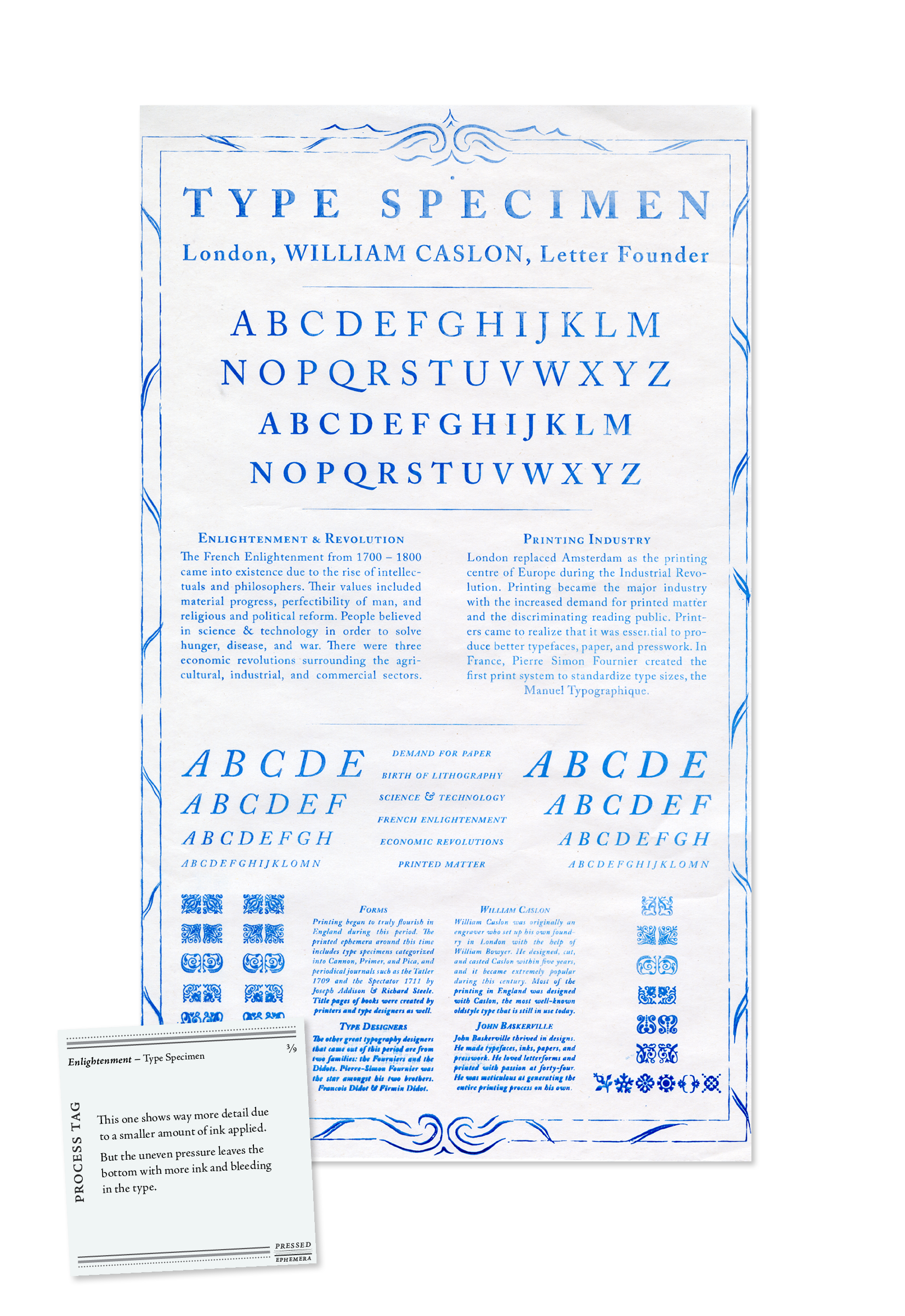
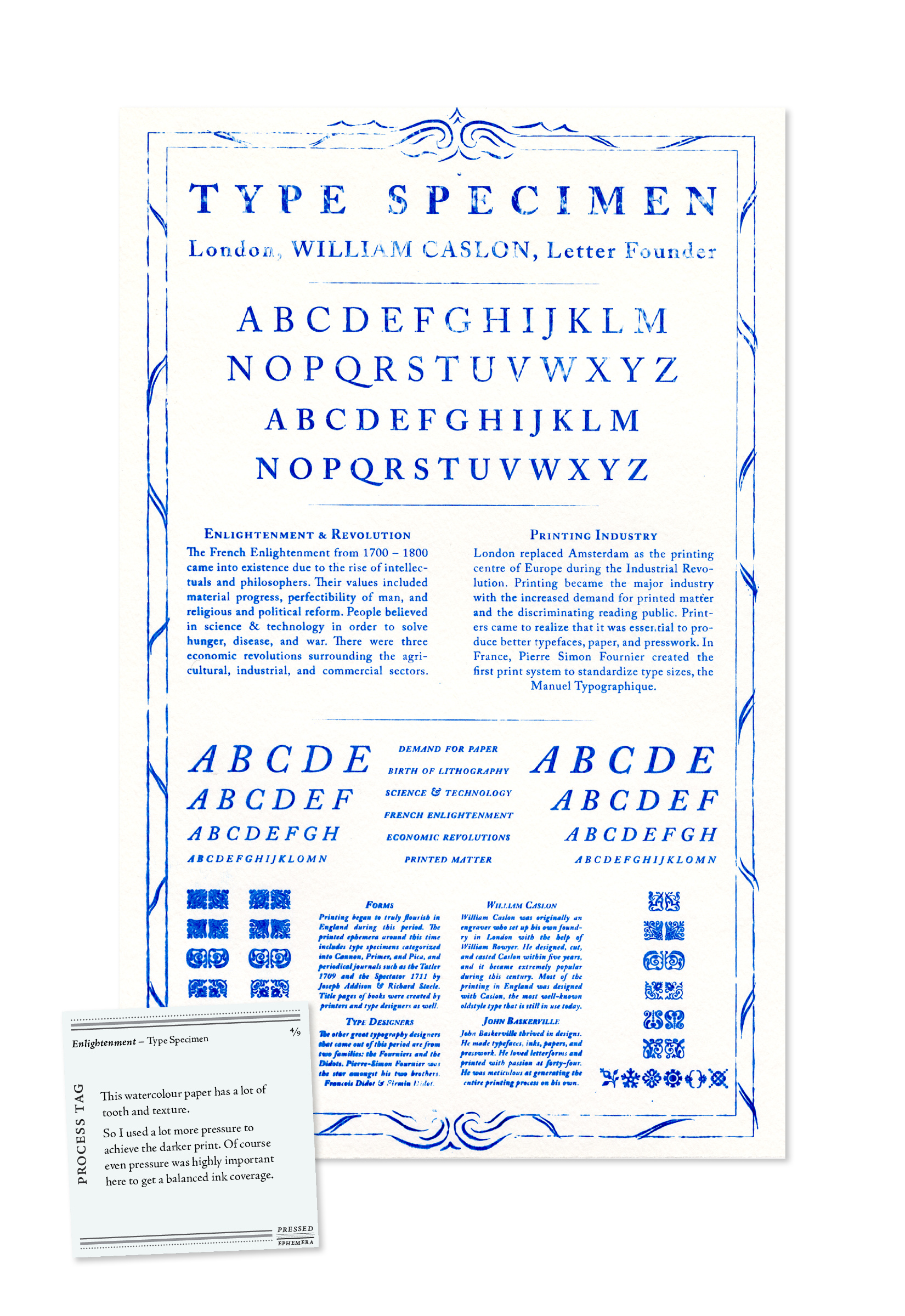
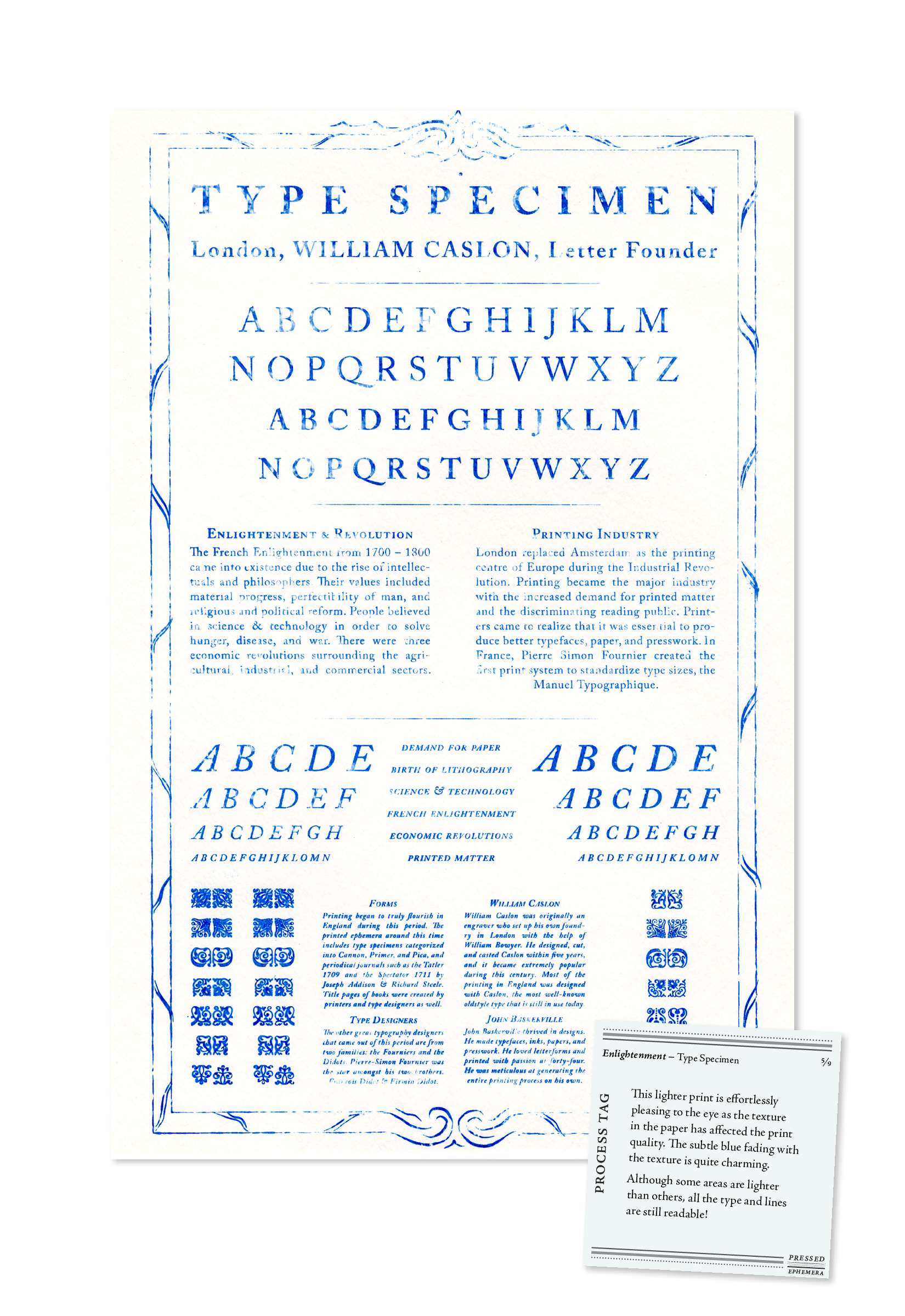

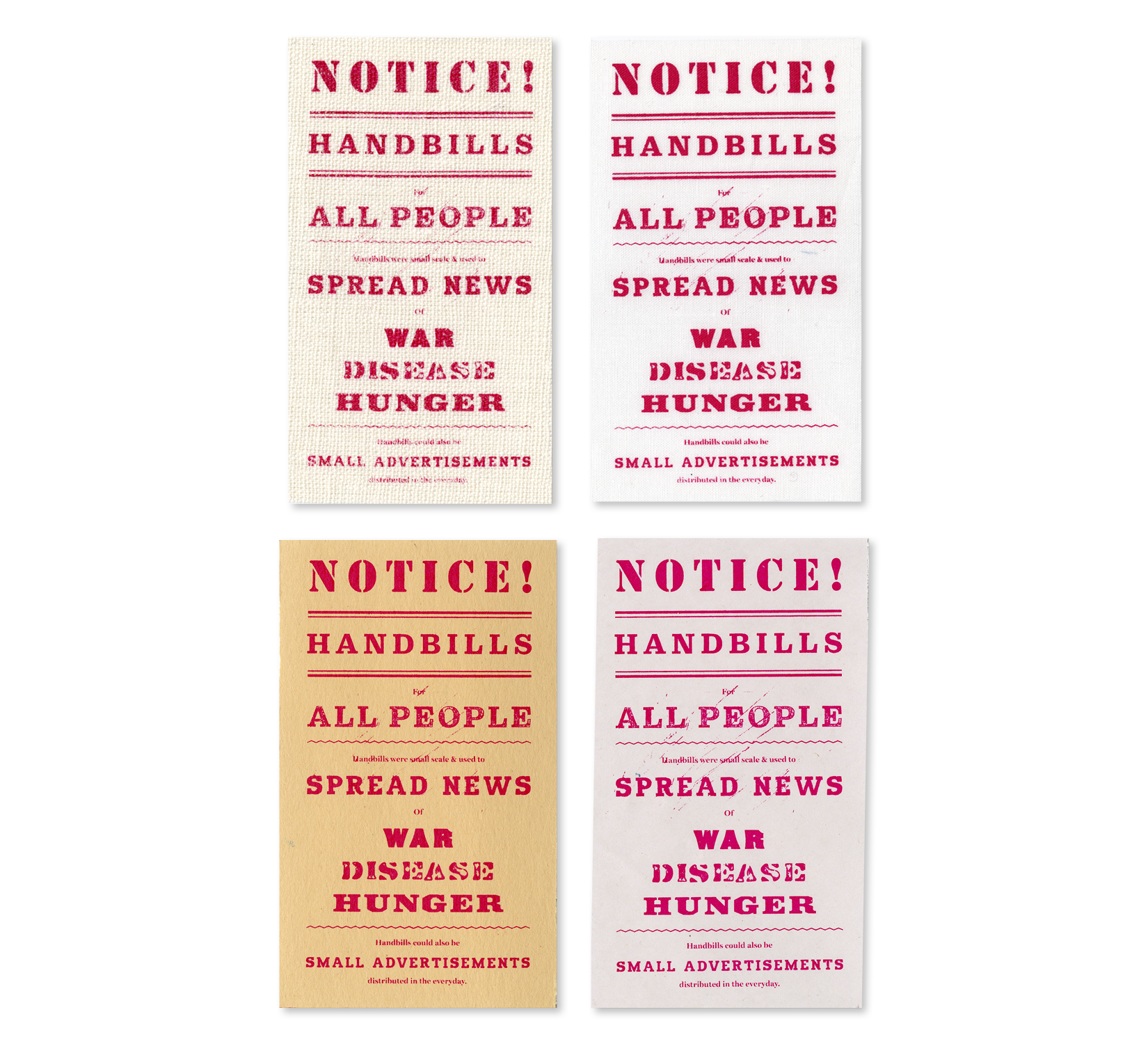
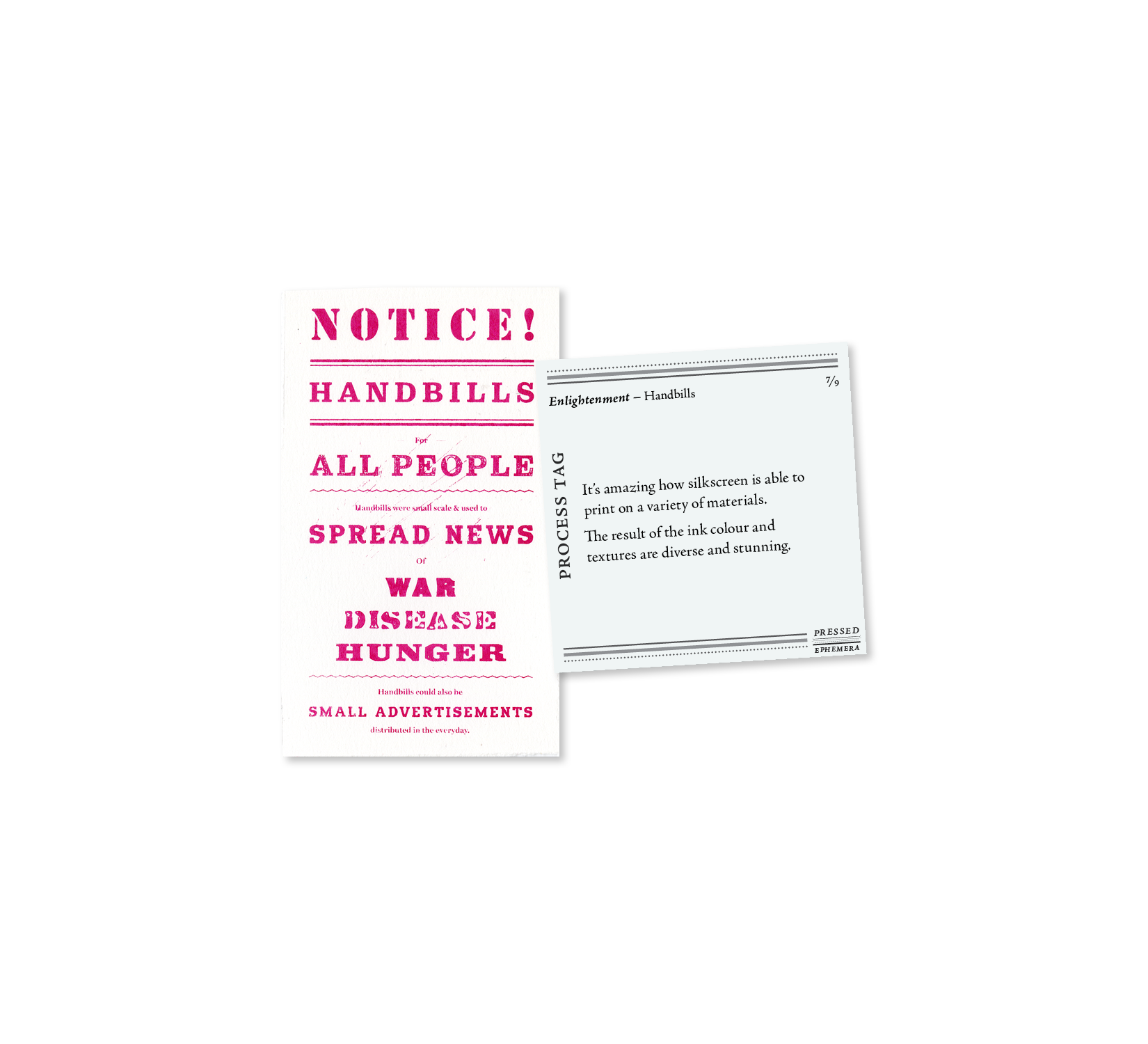
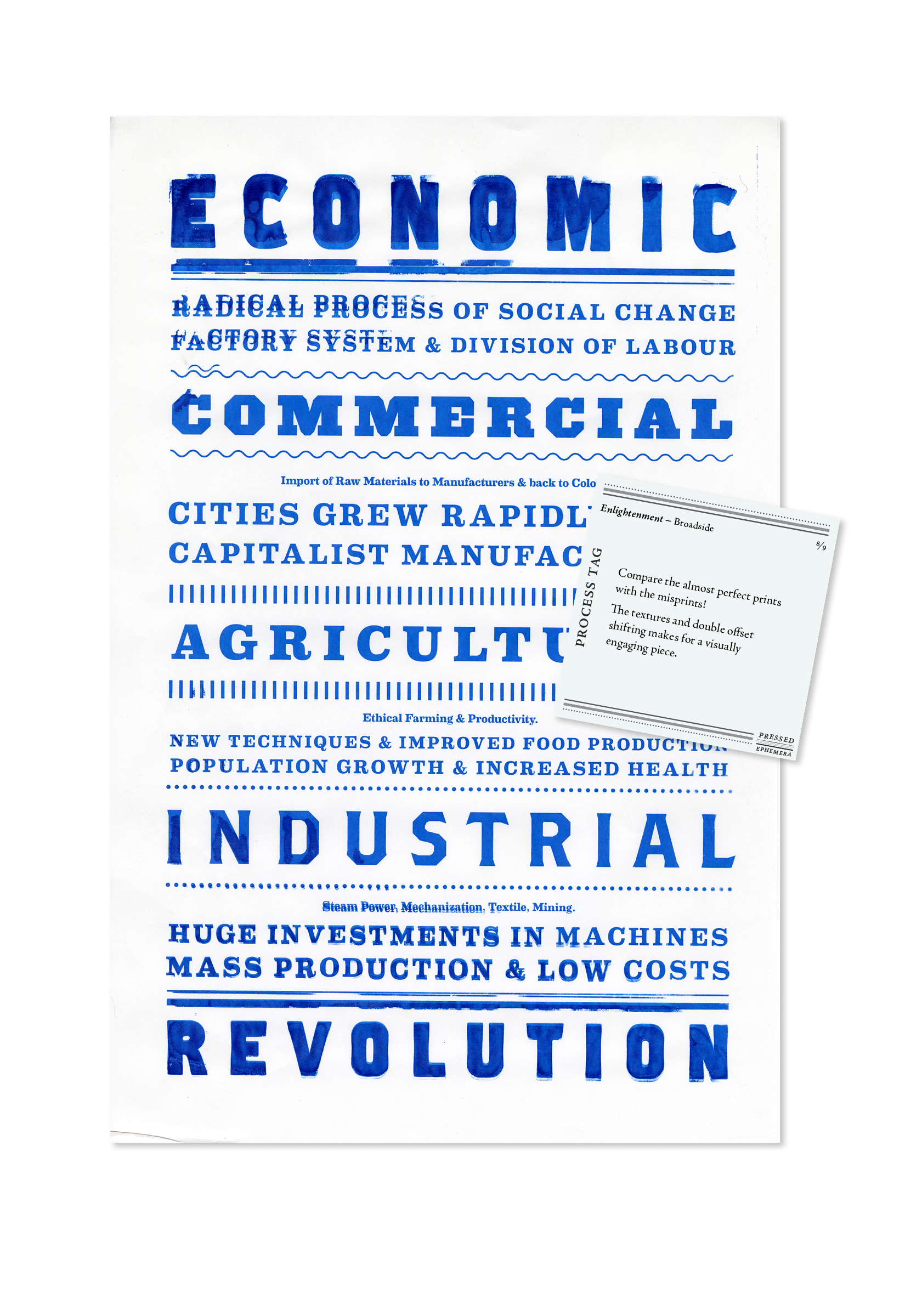
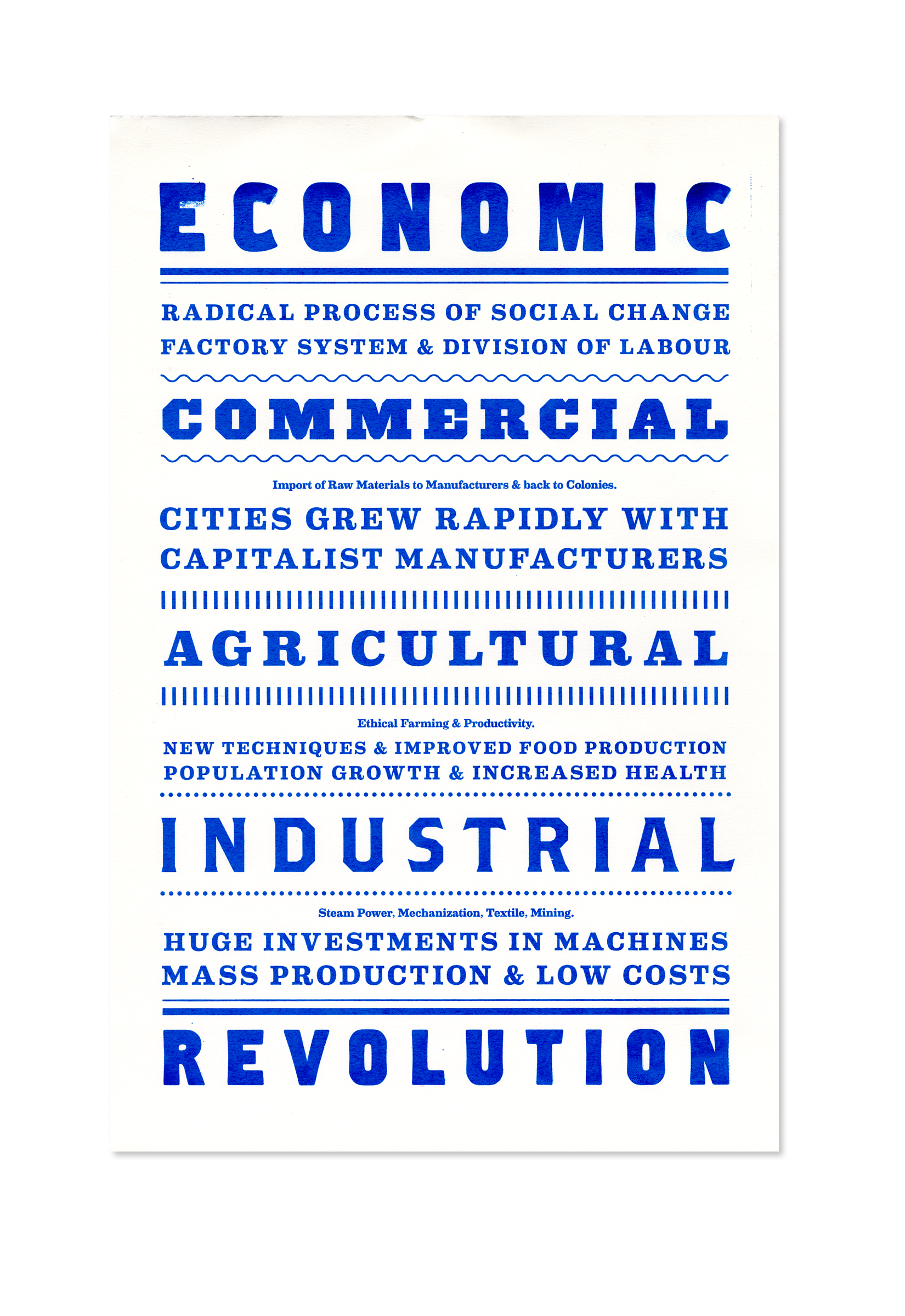

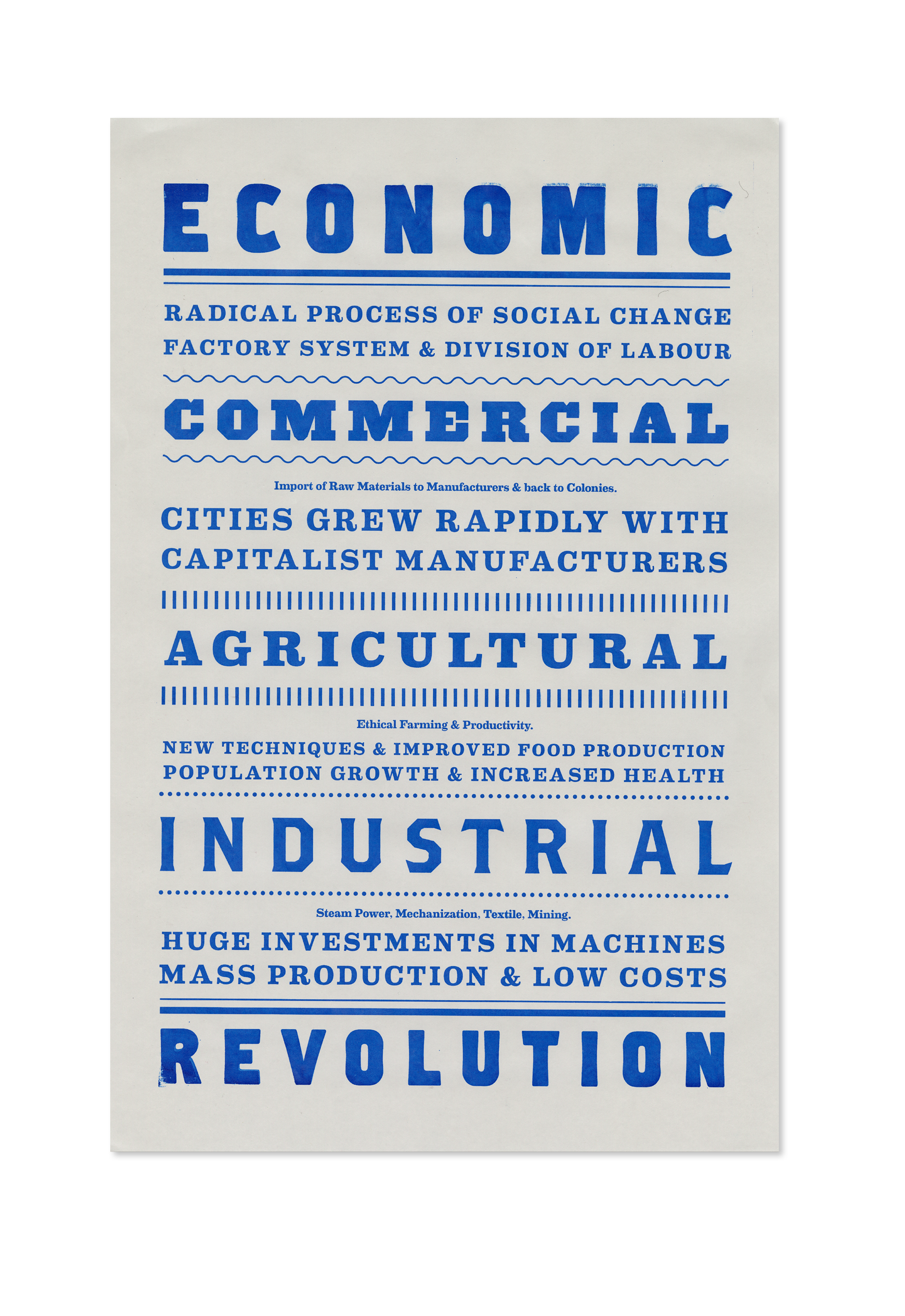
Process Pieces & Tags · Cyanotype
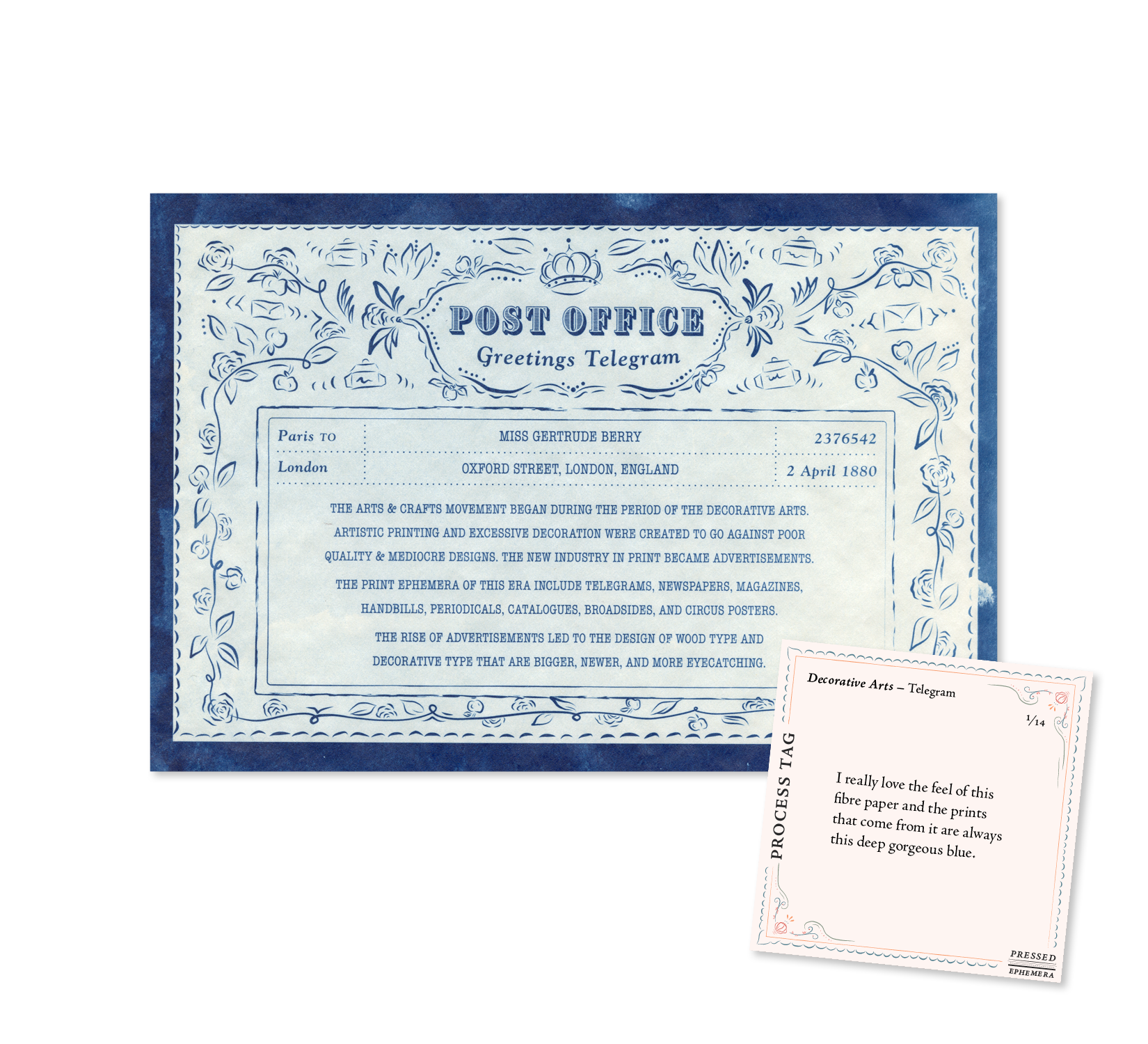
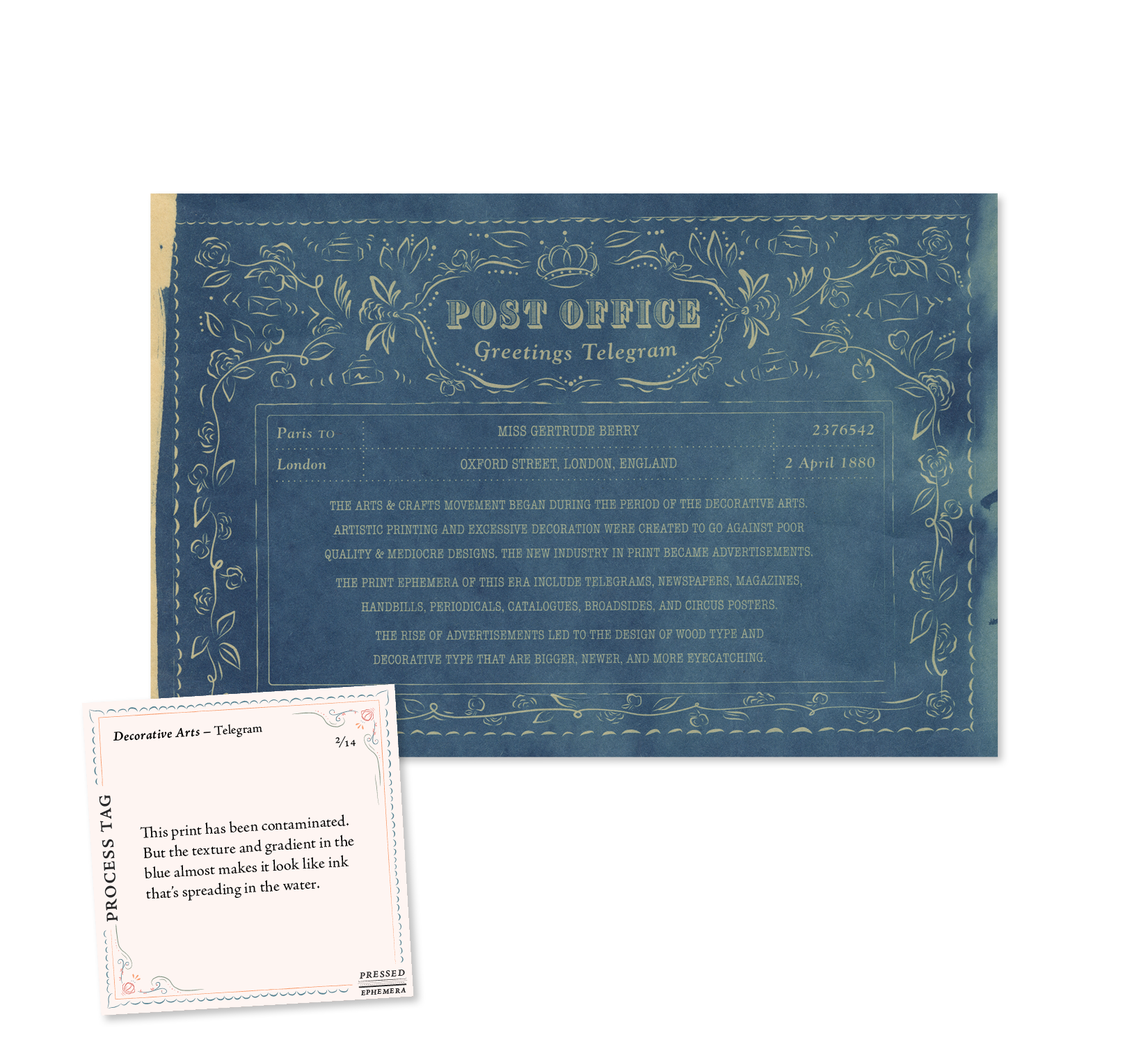
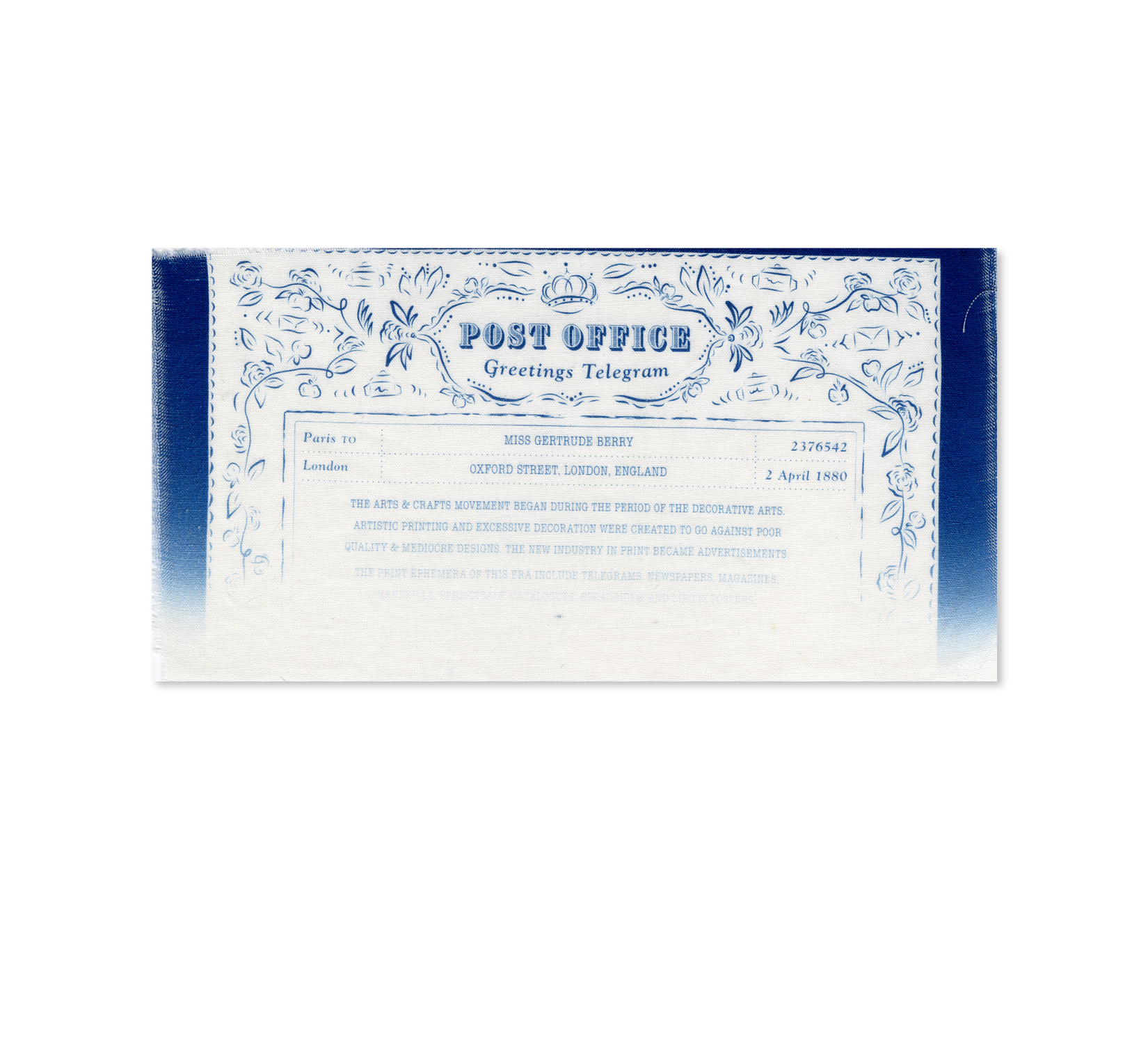
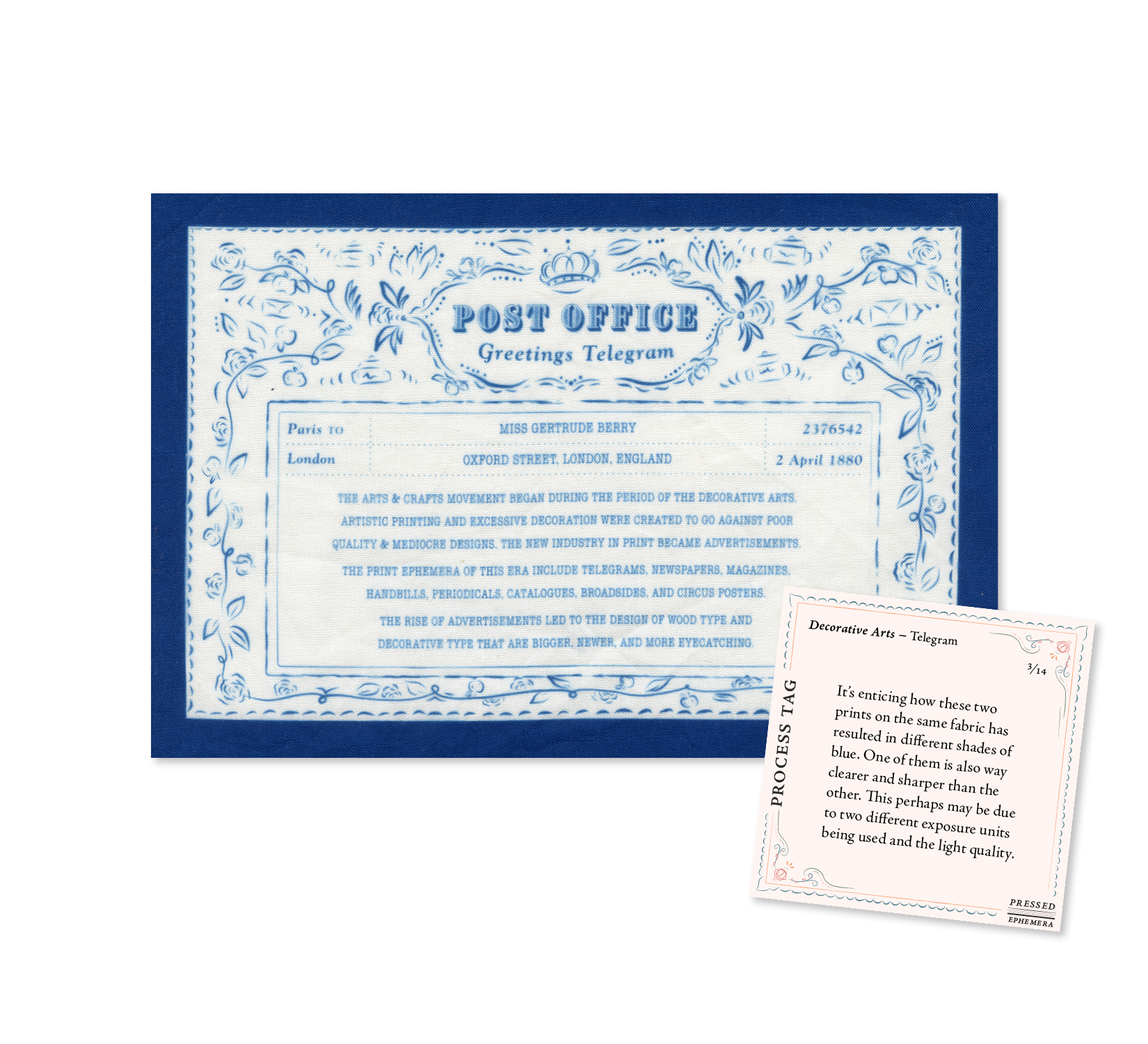
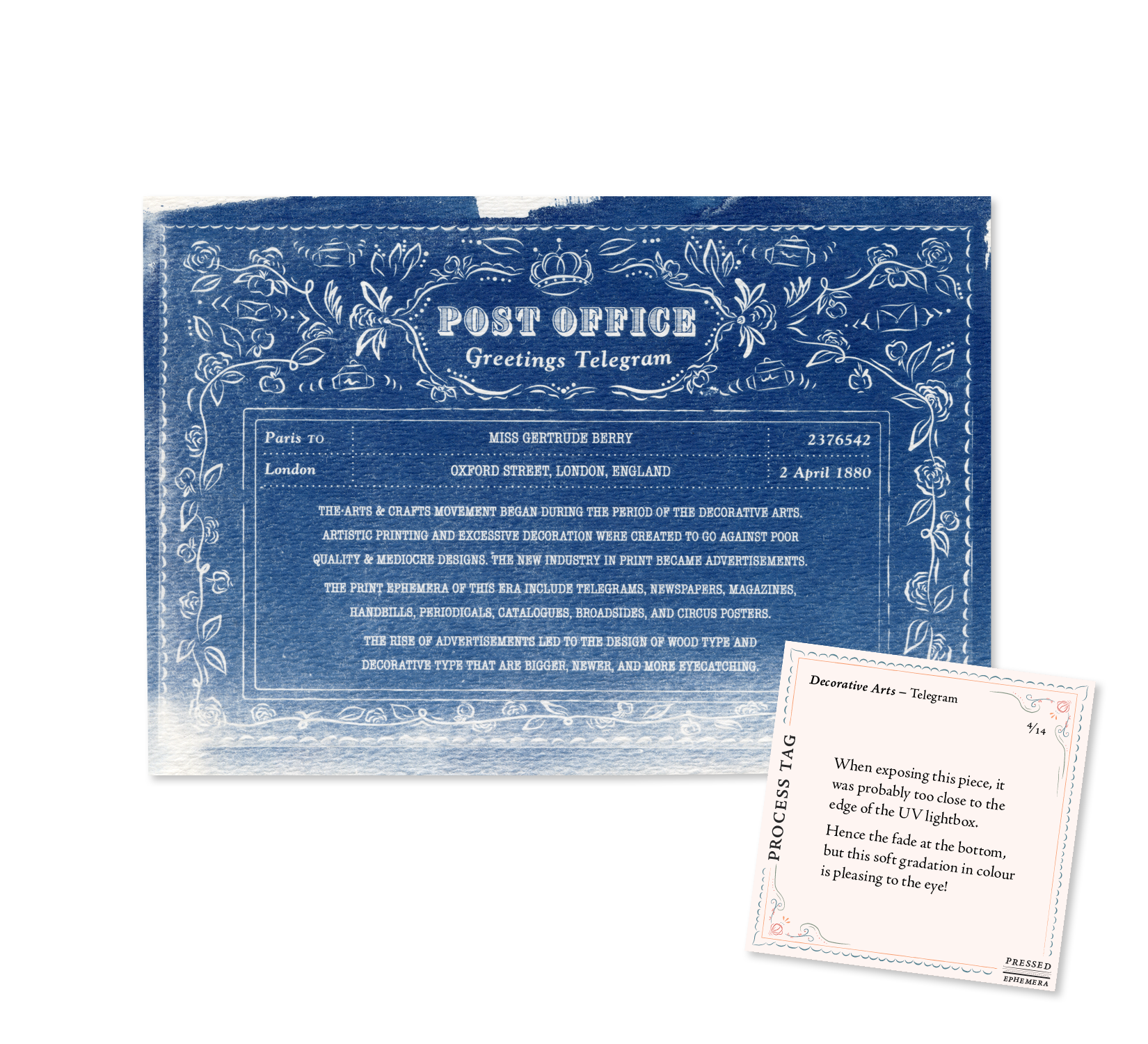
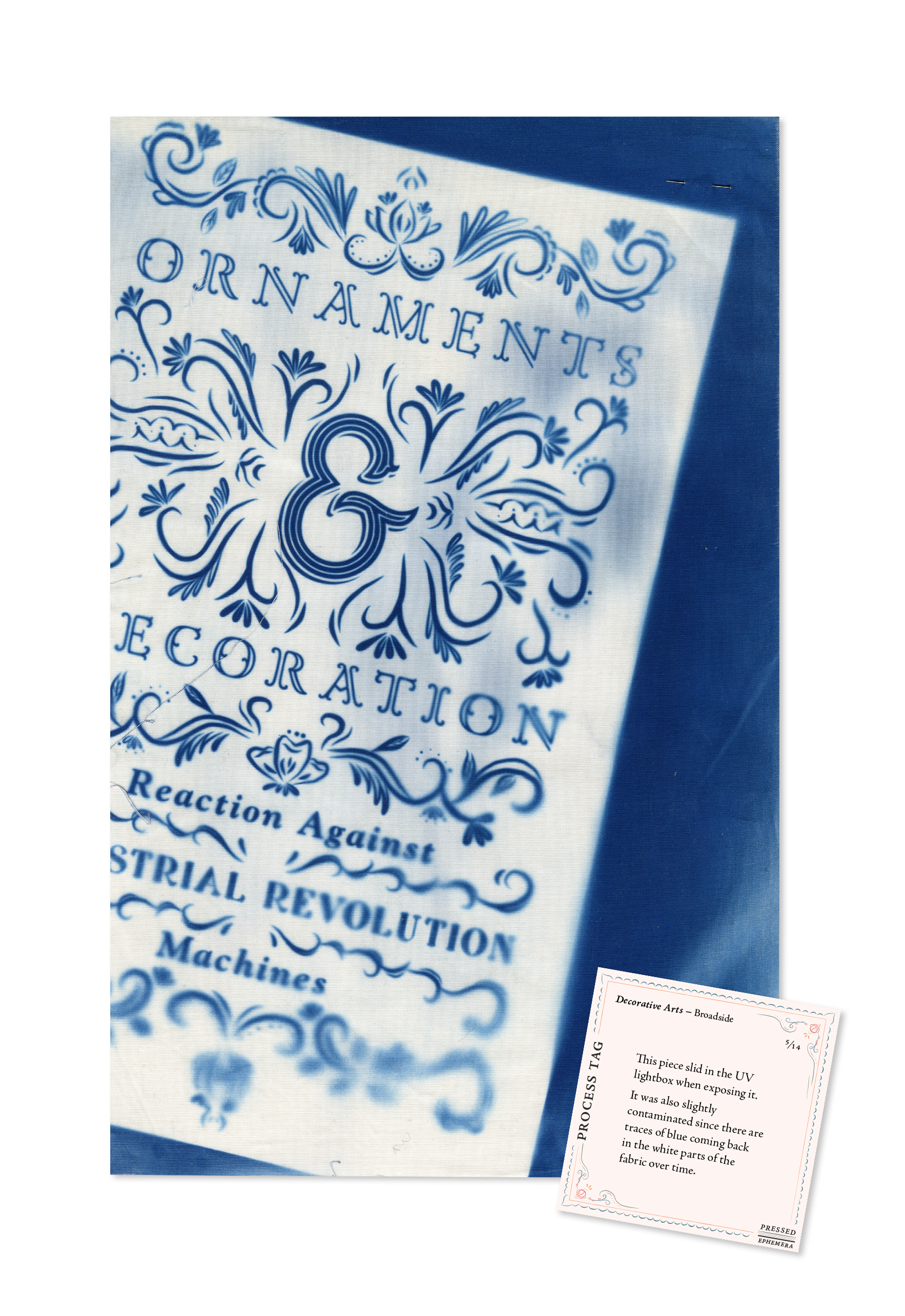
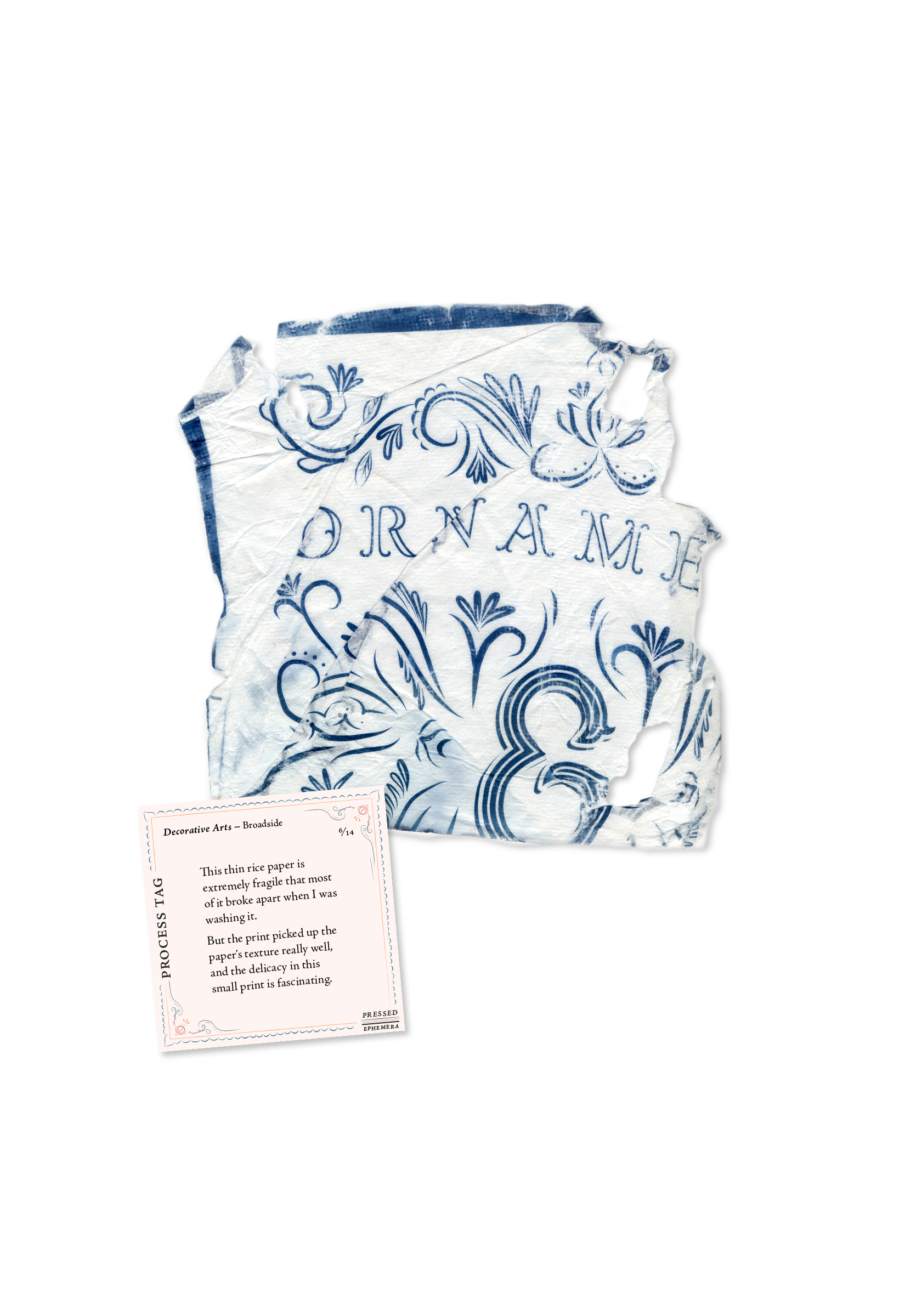
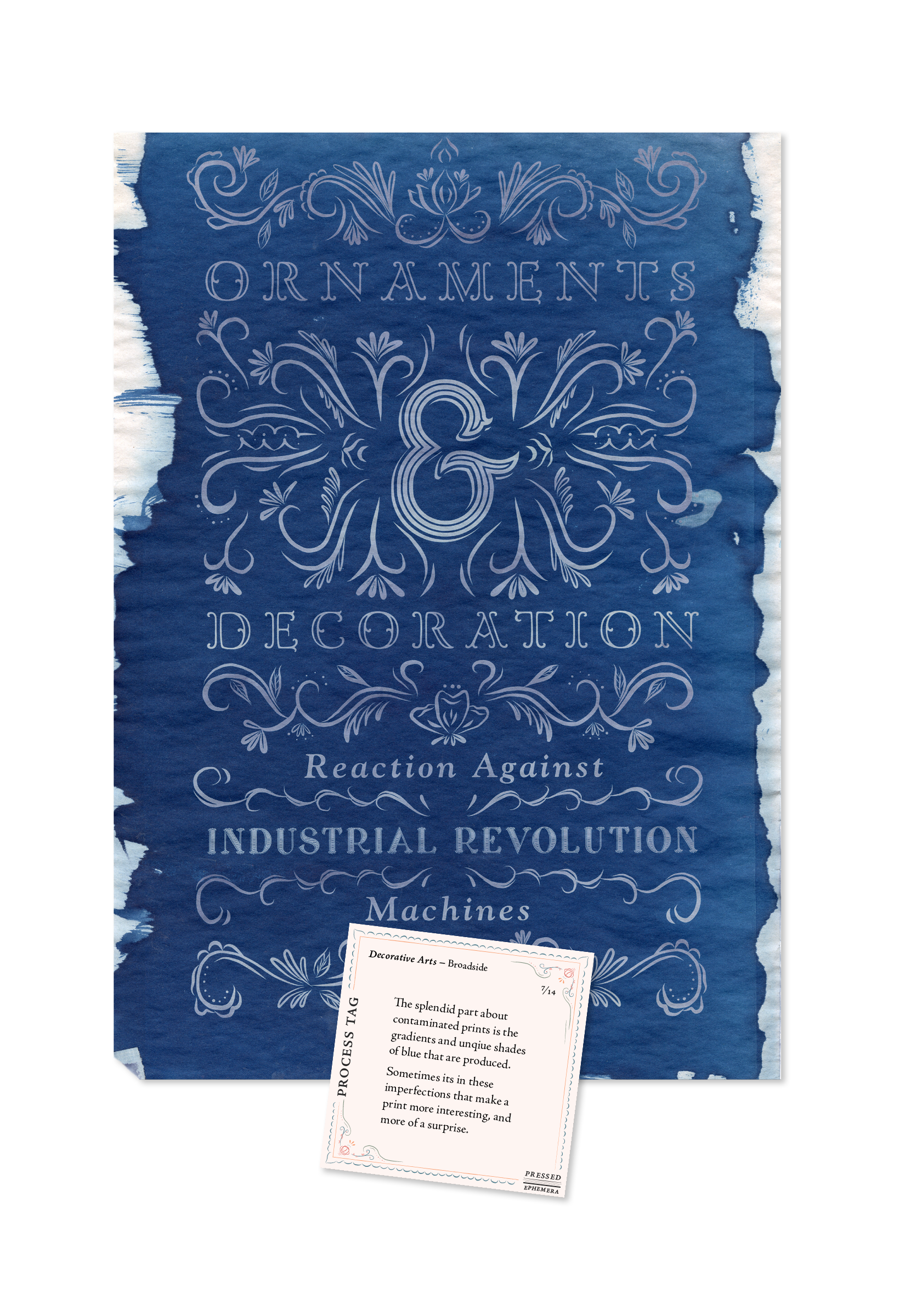

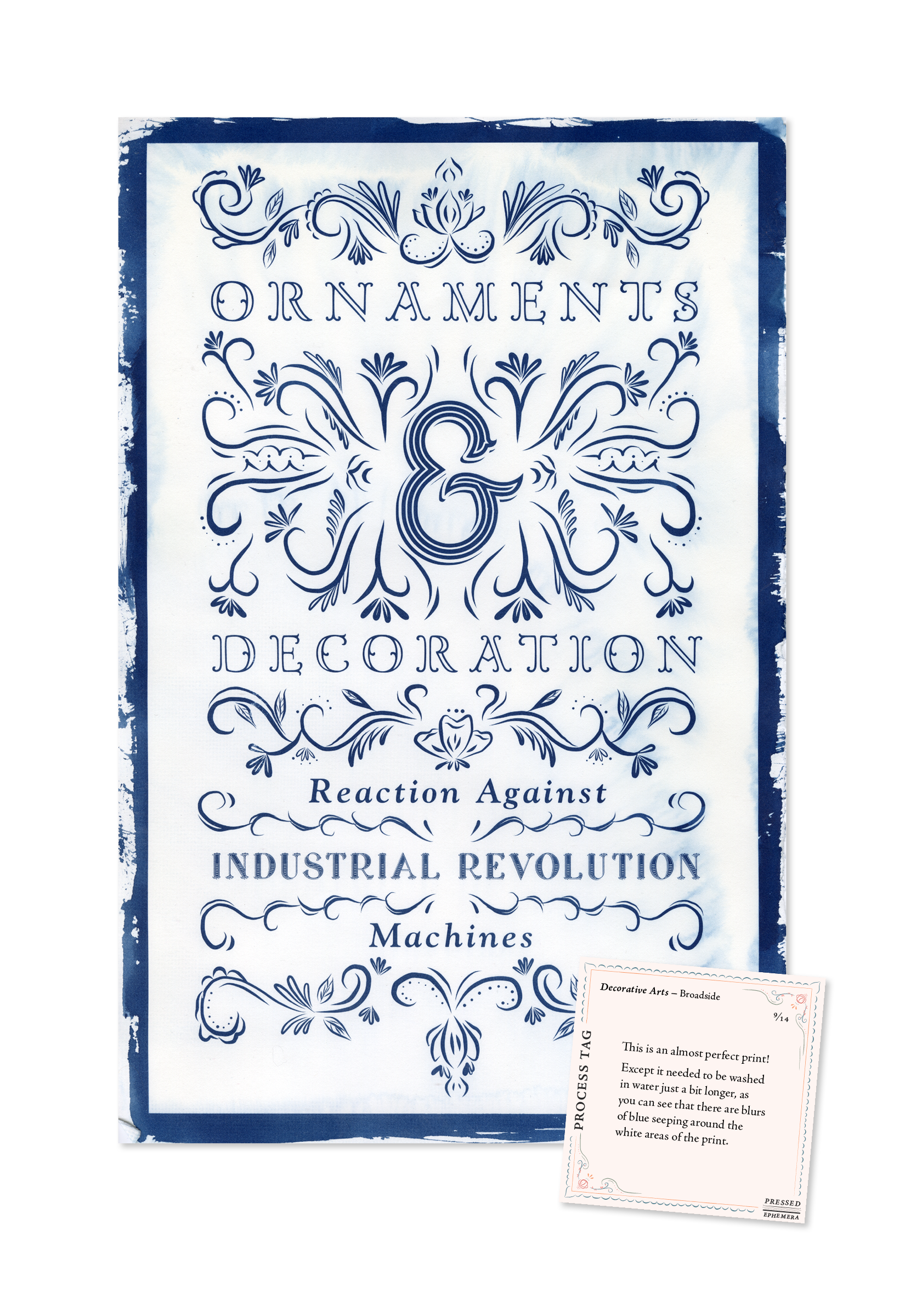
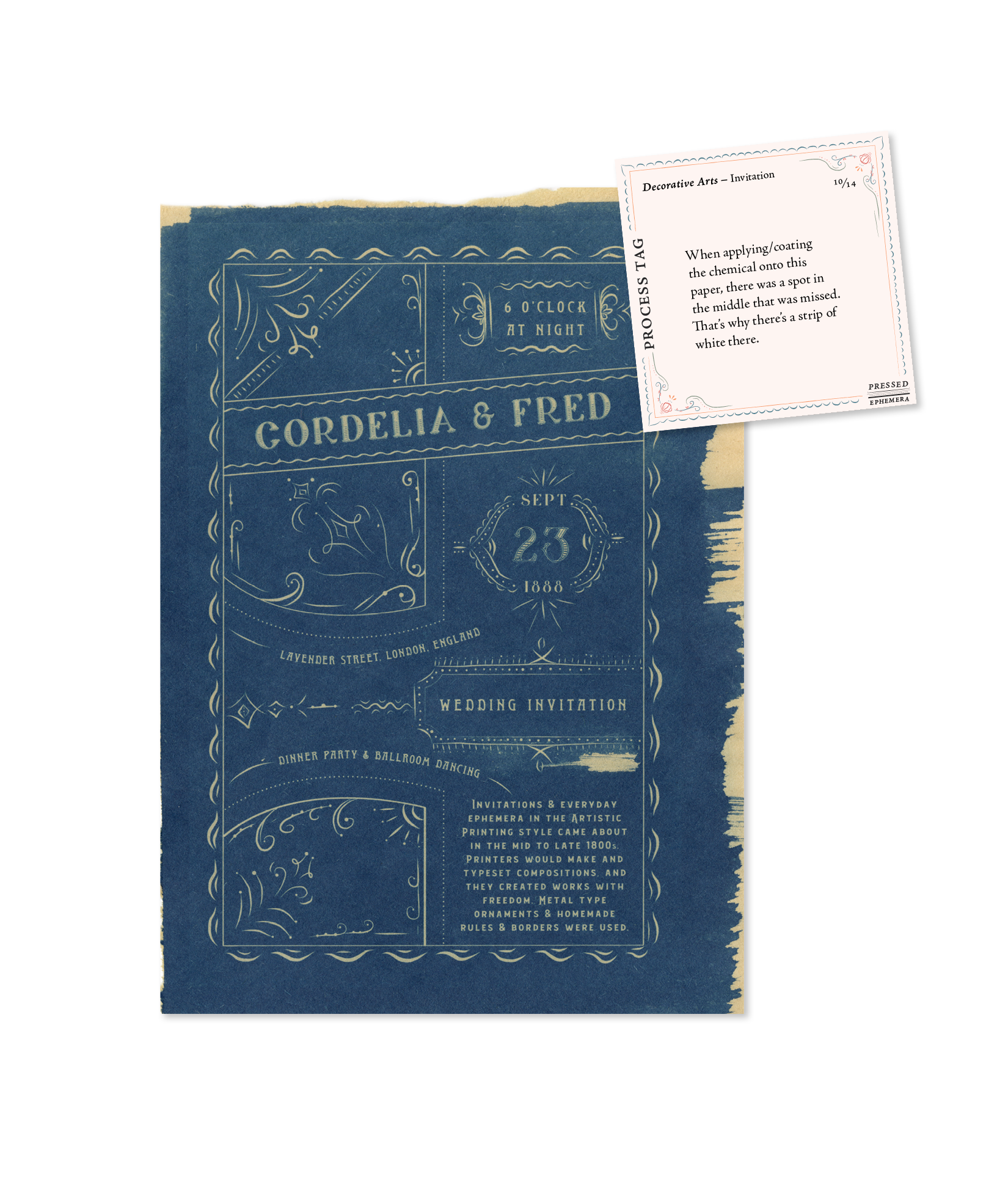
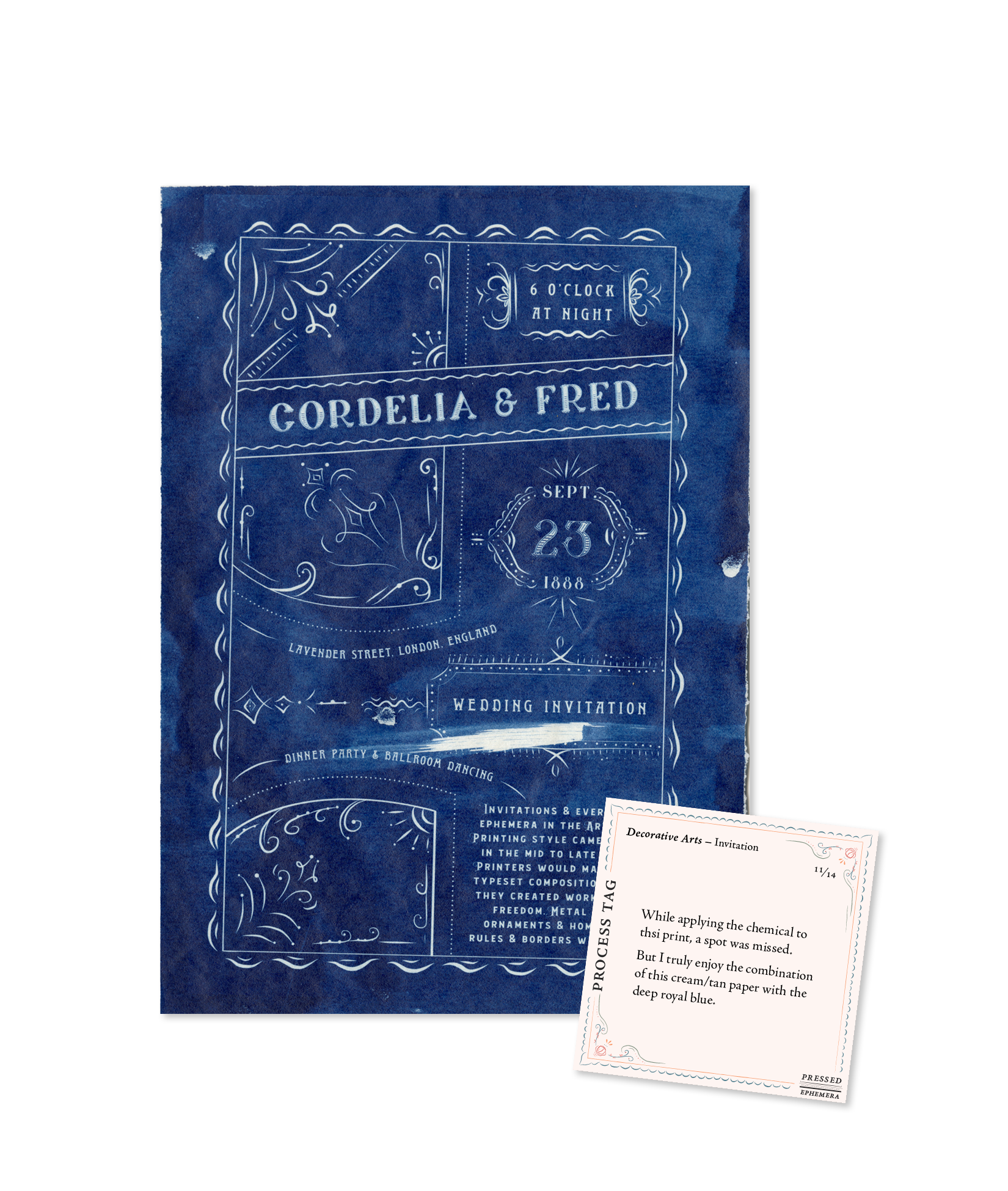

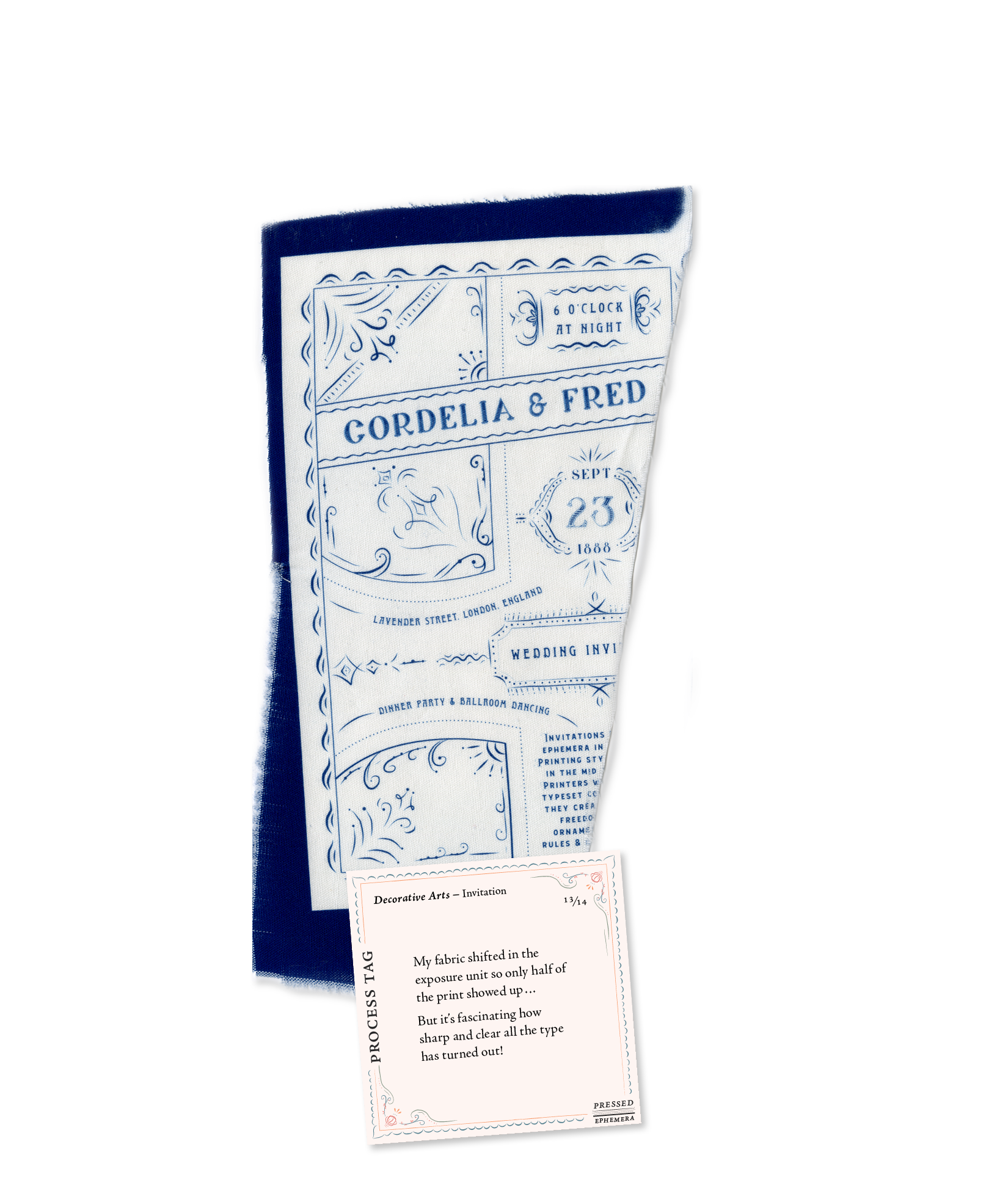
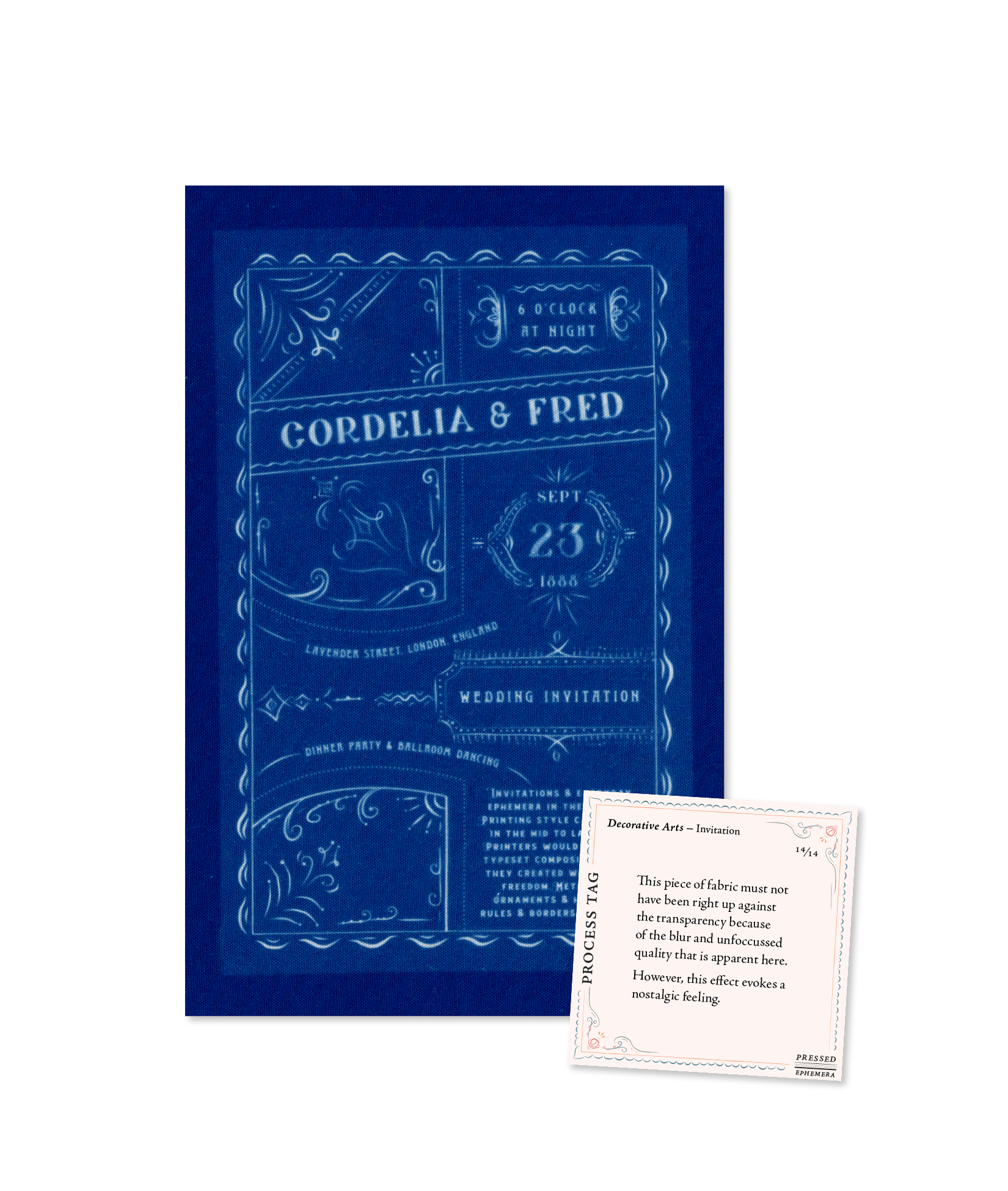
Postcard Takeaways
These postcards are the takeaways at my exhibition. The portrait ones with Design Style talk about type and how aesthetics were affected by history and ideals of the time. On the other hand, the landscape ones with Old Processes talk about the making process with each of the printing methods.
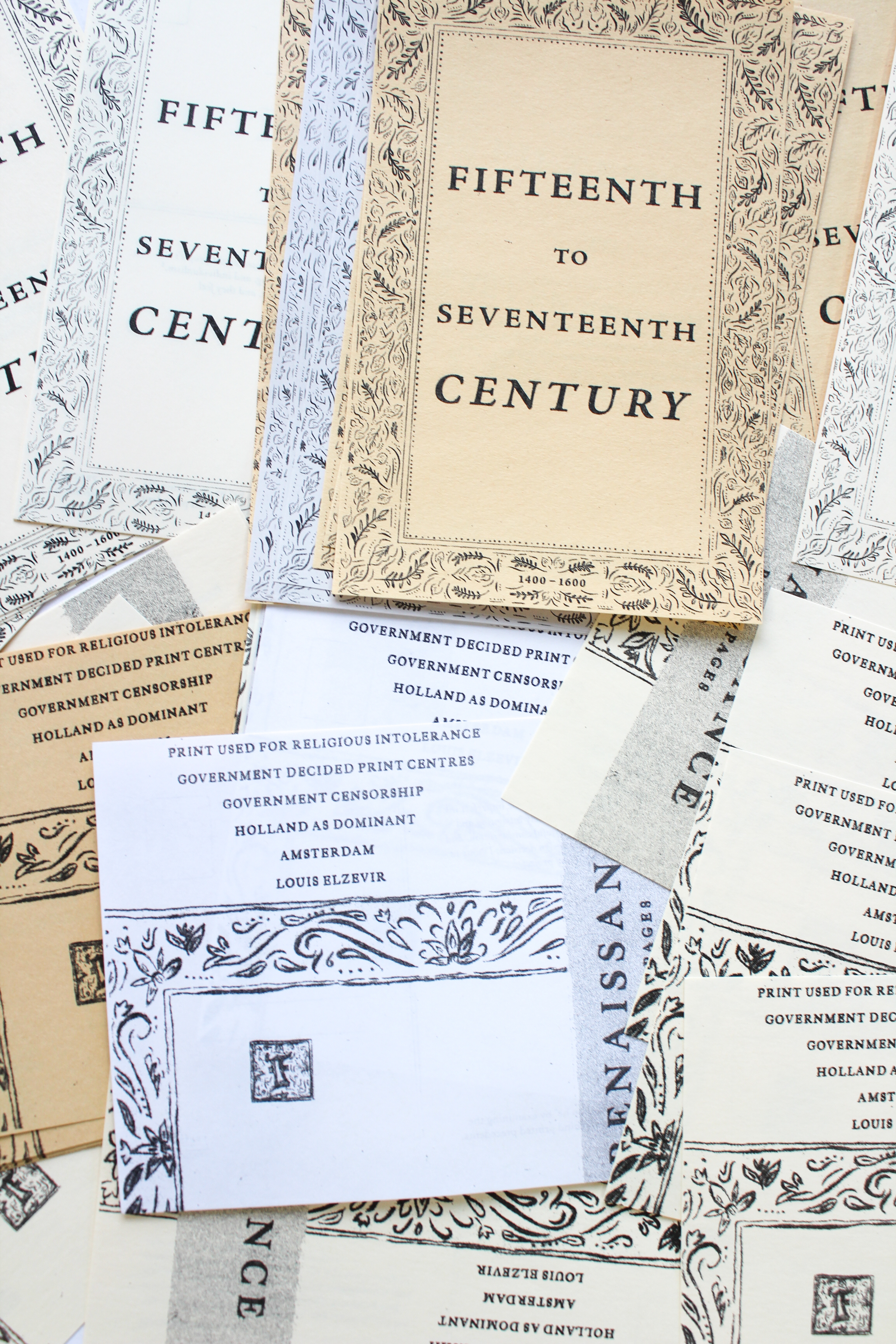

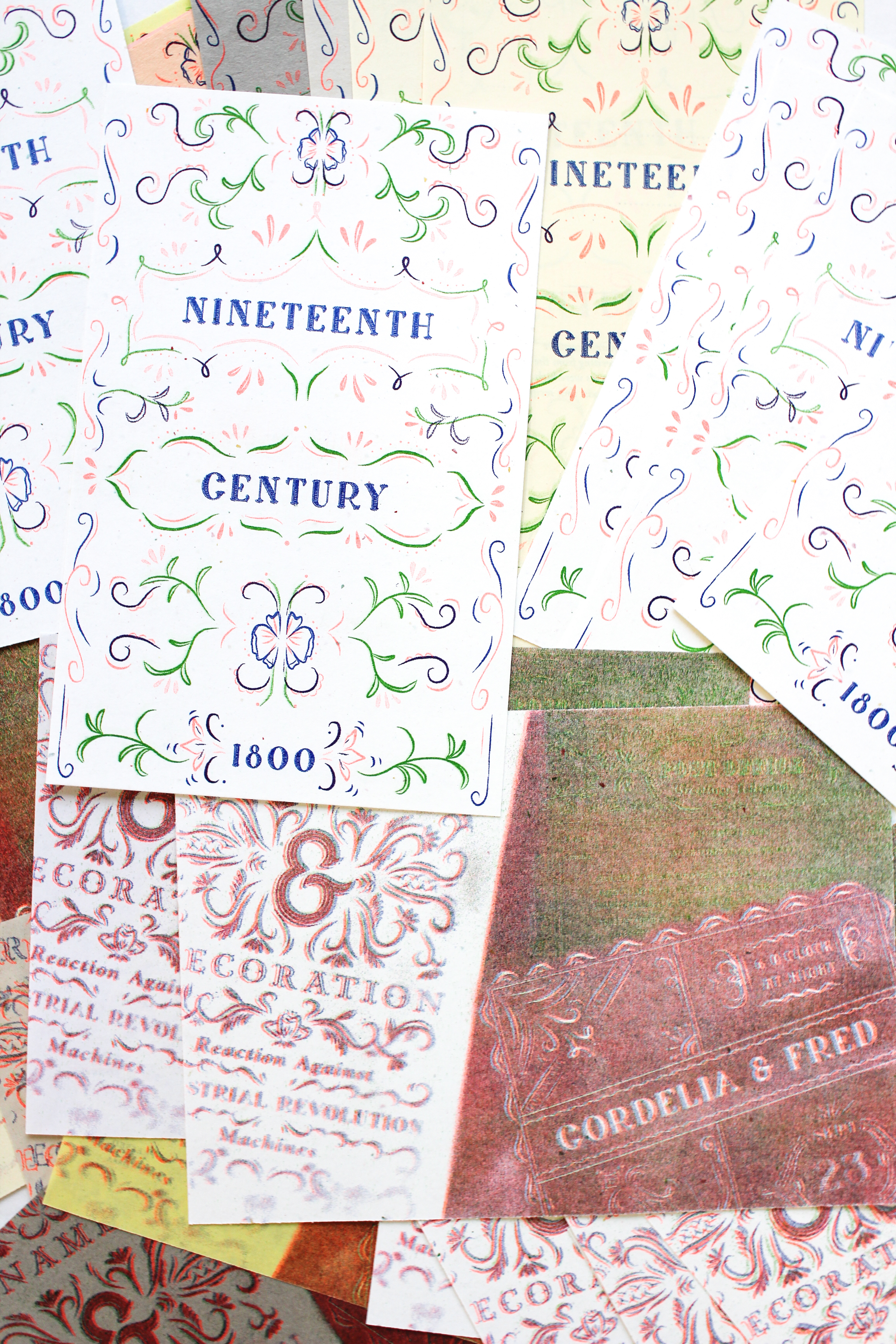


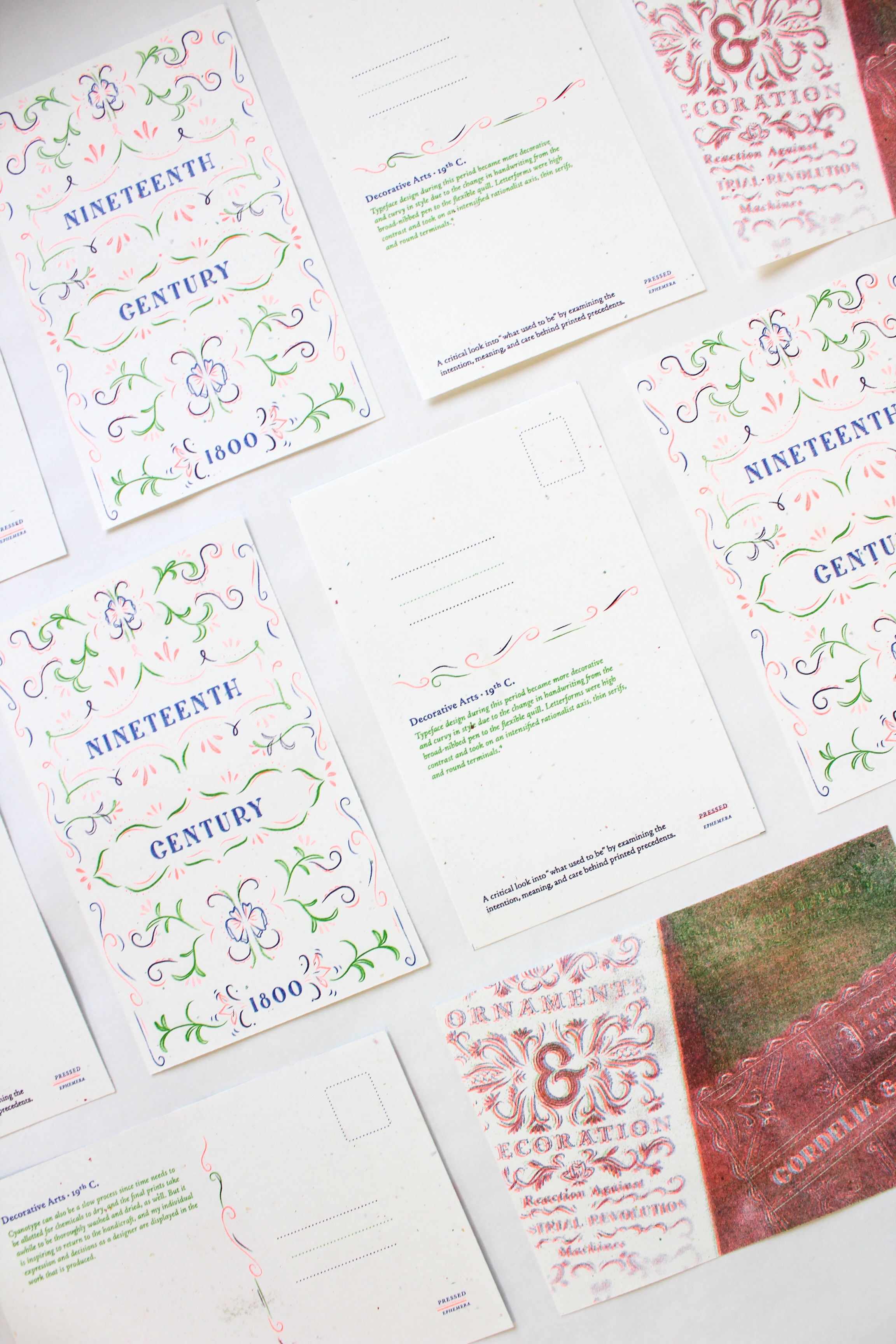
Process Books
At the end of my grad year in March 2020, I was unable to finish this project due to the COVID-19 pandemic and school closure. But I am so grateful to have had the chance to go back to school to complete my grad project in August 2020! As my thesis is heavily focussed on the process of making, this process book and the making of it was truly important in wrapping up my entire project. I very much enjoyed bounding my book by hand and finishing it off with my Pressed Ephemera logomark foil stamped on the covers.
This process book would have been be at the centre of my exhibition where viewers can flip through my journey.
I would like to thank my wonderful instructors, technicians, and friends for all of their support throughout this project.

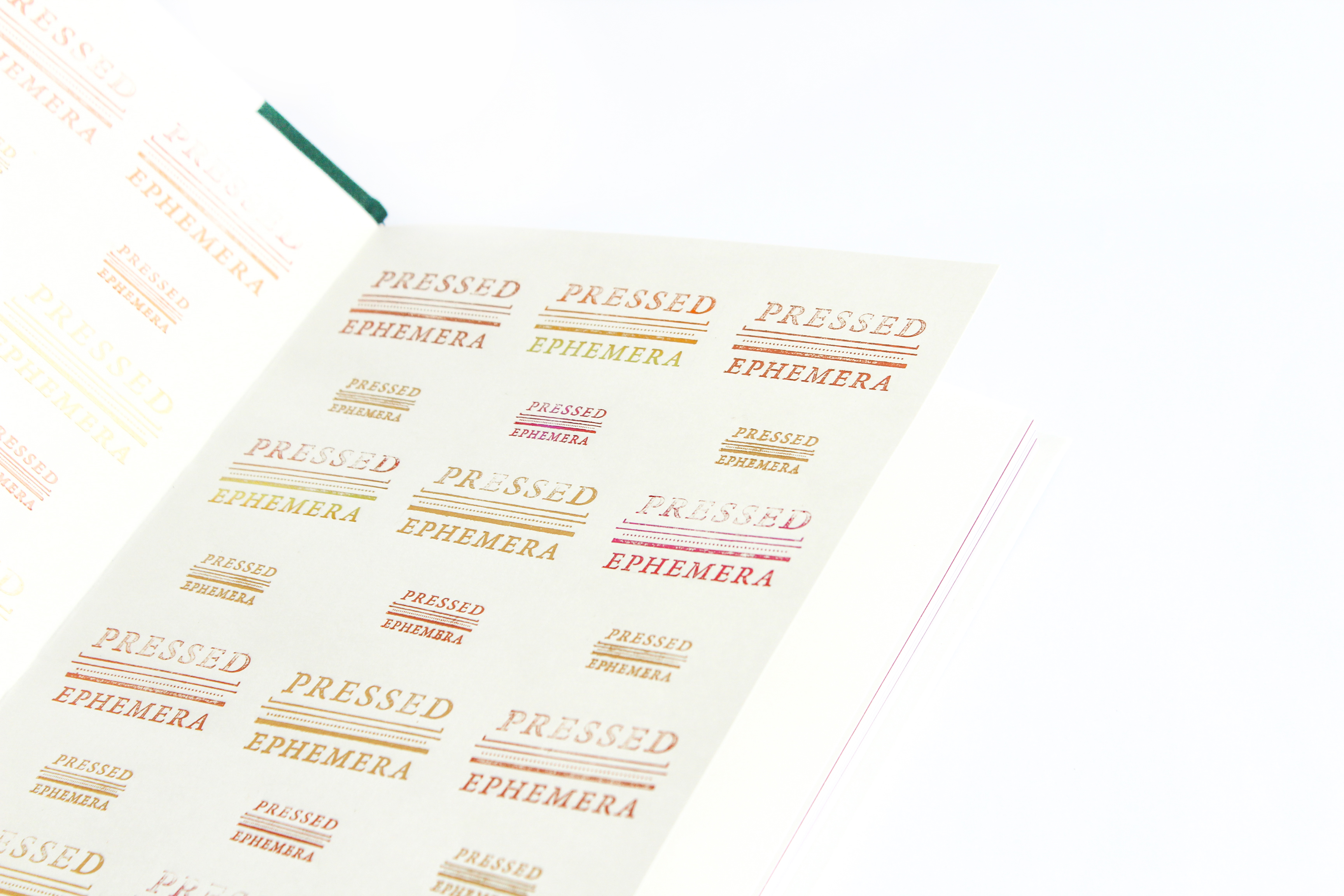


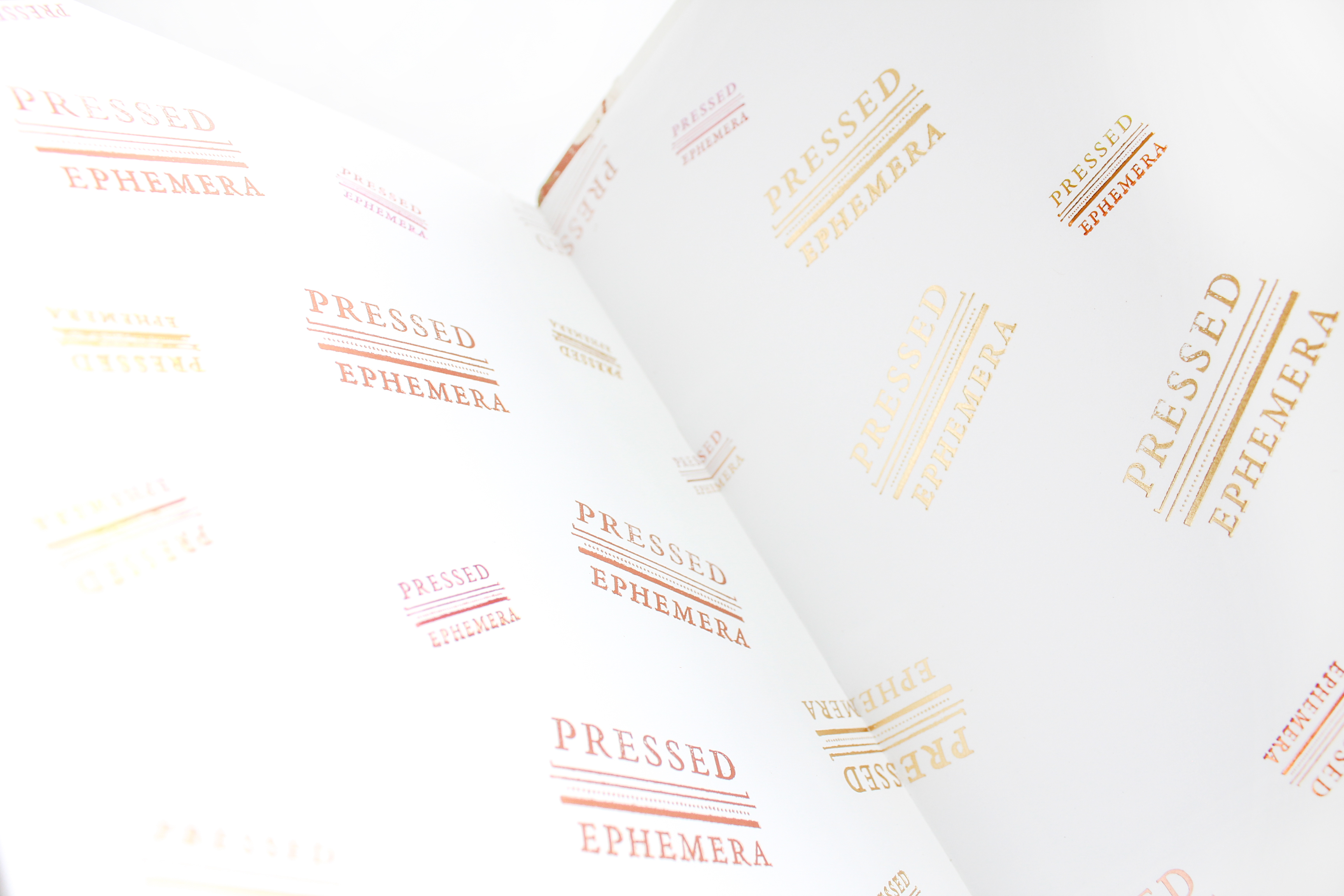
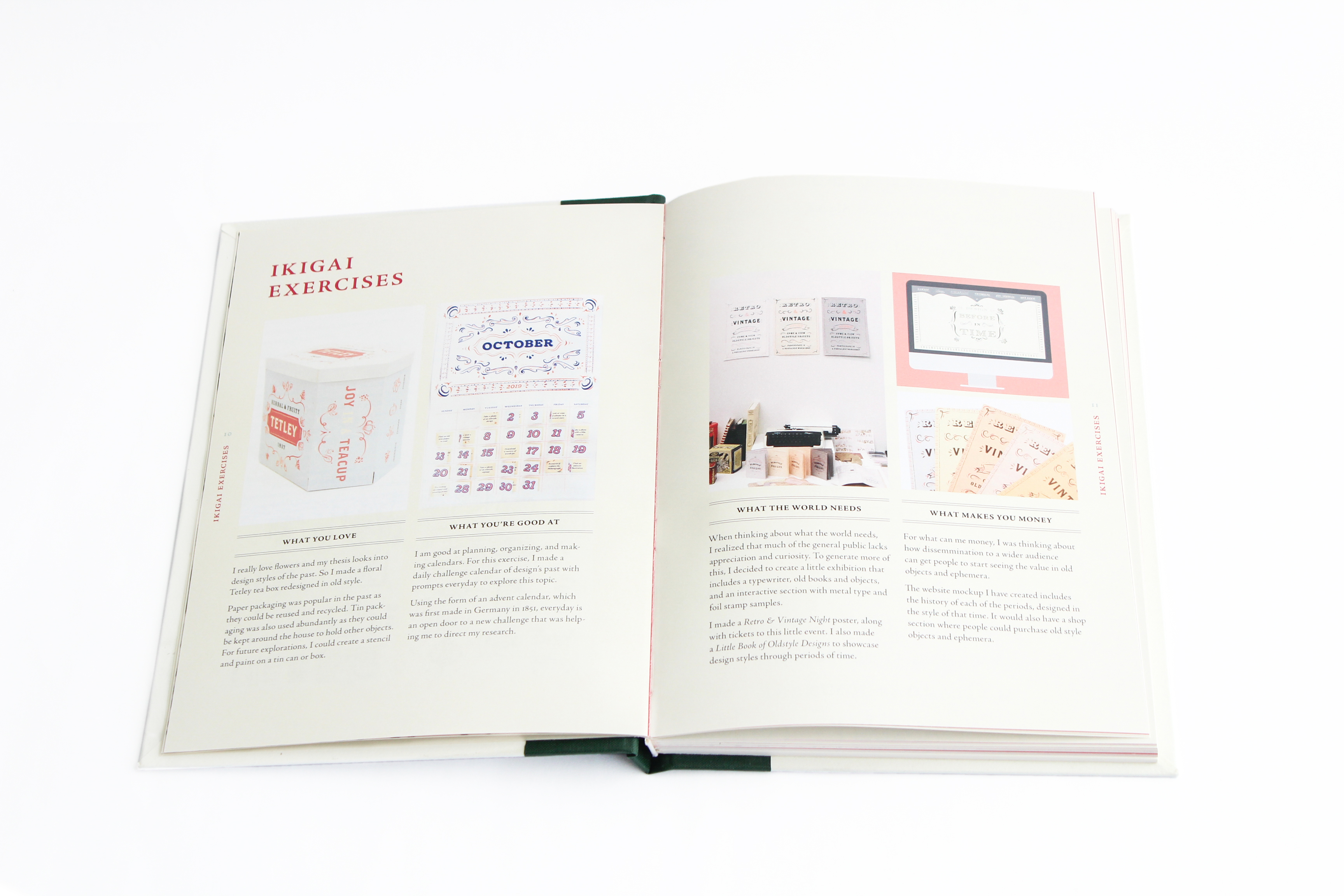



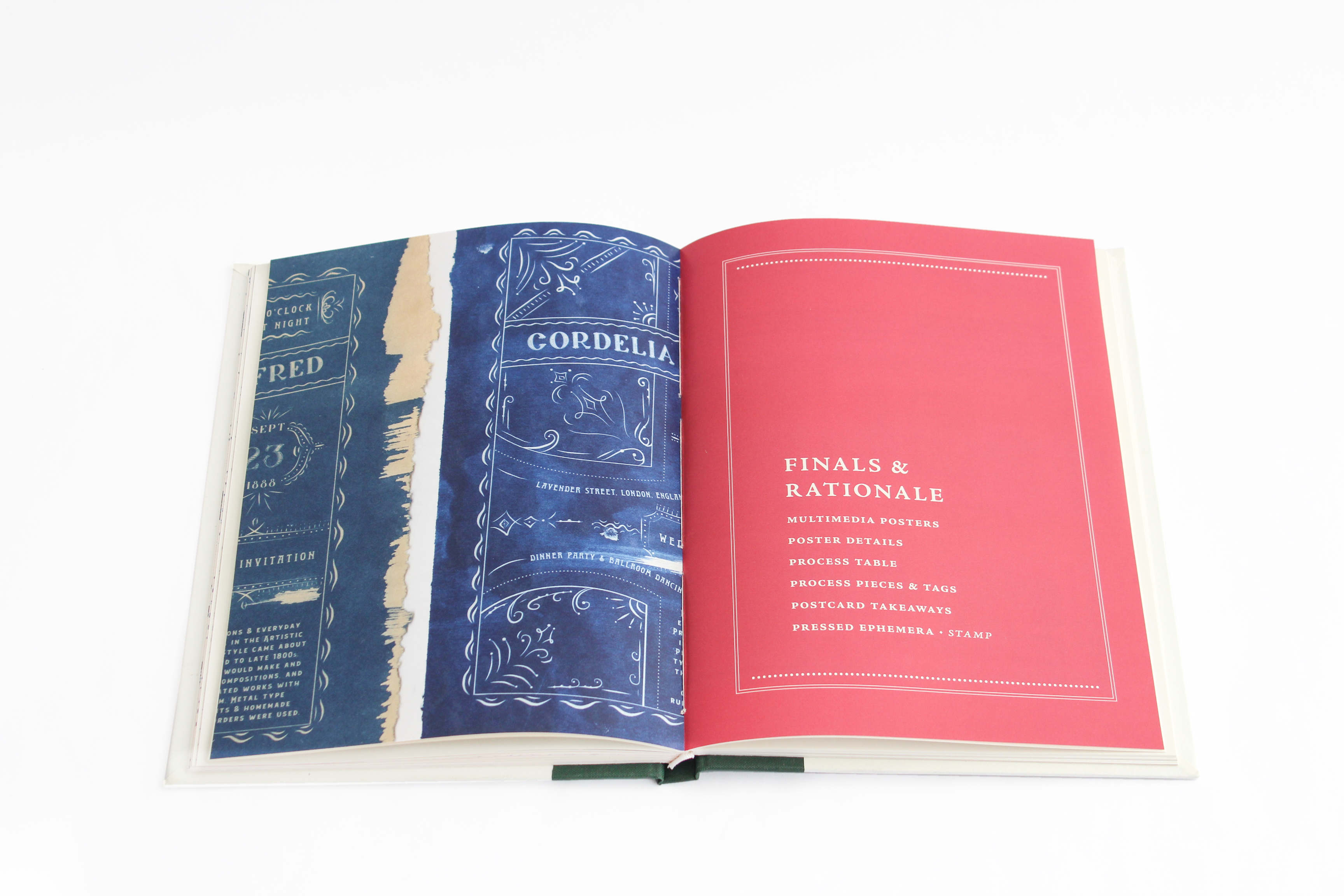
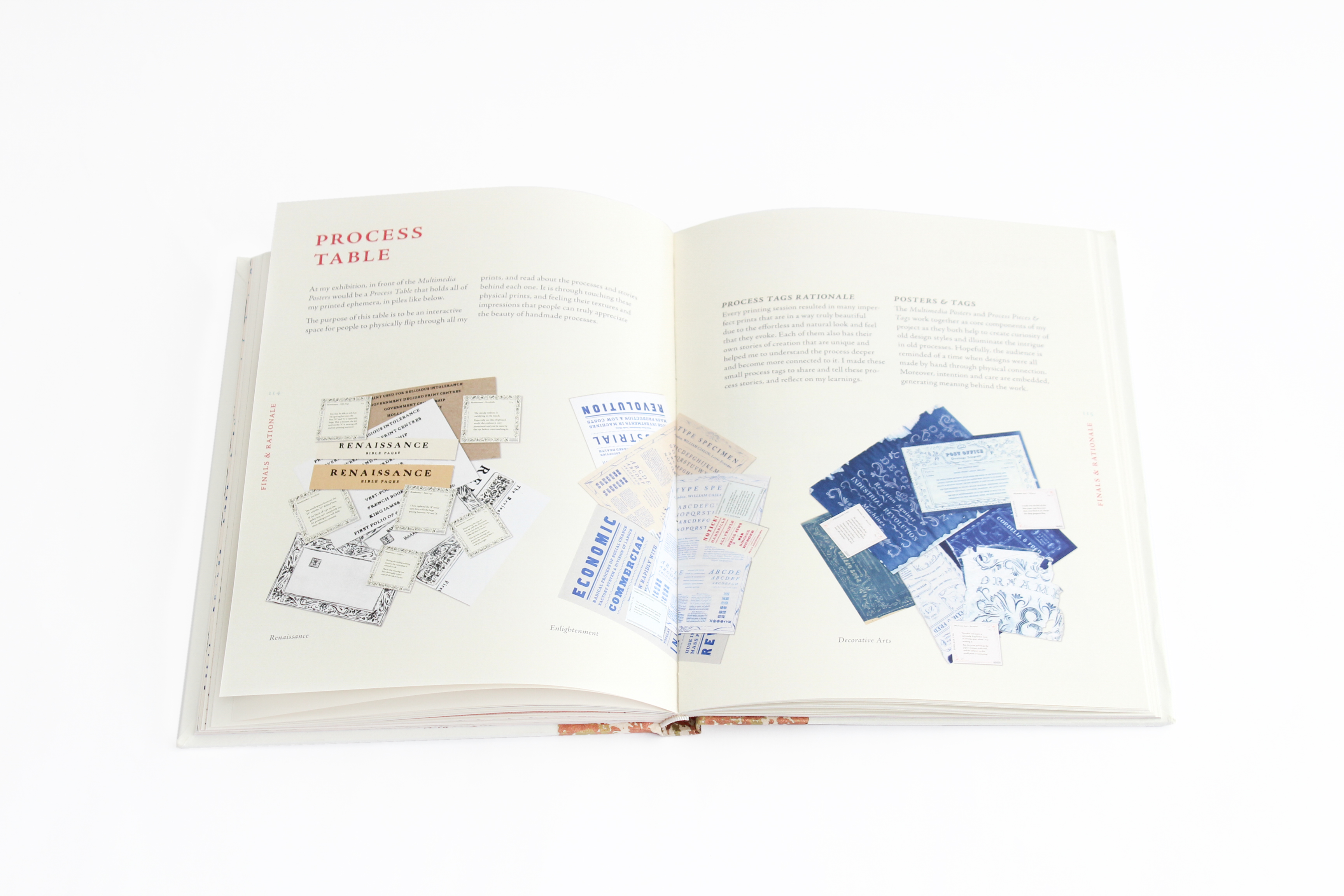




Journals
The risograph journal aims to provide an introduction to makers and designers on the importance and wonders of handmaking, while highlighting the exciting handmade processes that I learned and used.
The risograph was used in order to produce multiple copies for wider dissemination with four print colours. The risograph was developed from and acts very much like the original silkscreen process where screens are made for the ink to pass through to create multiple copies.

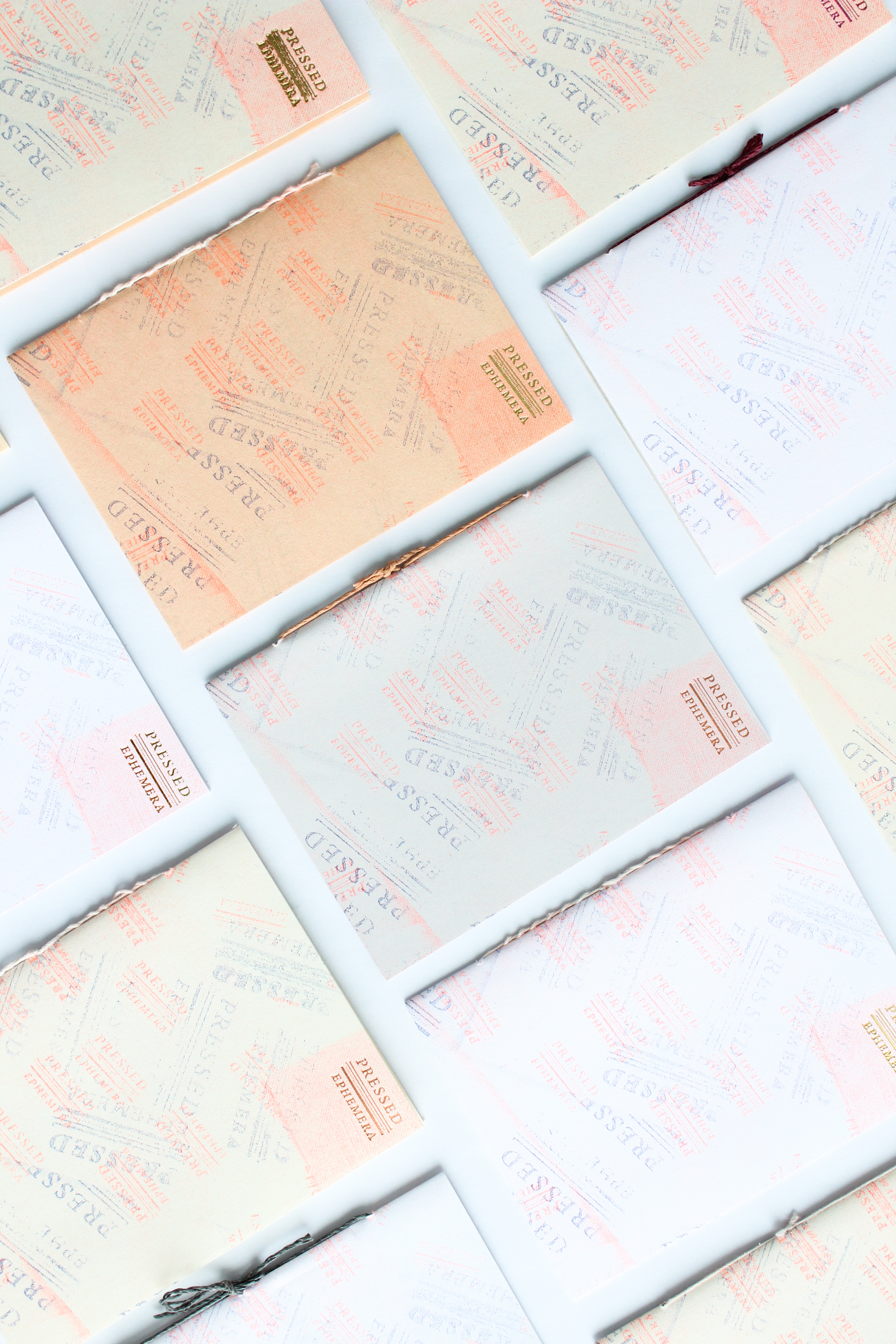



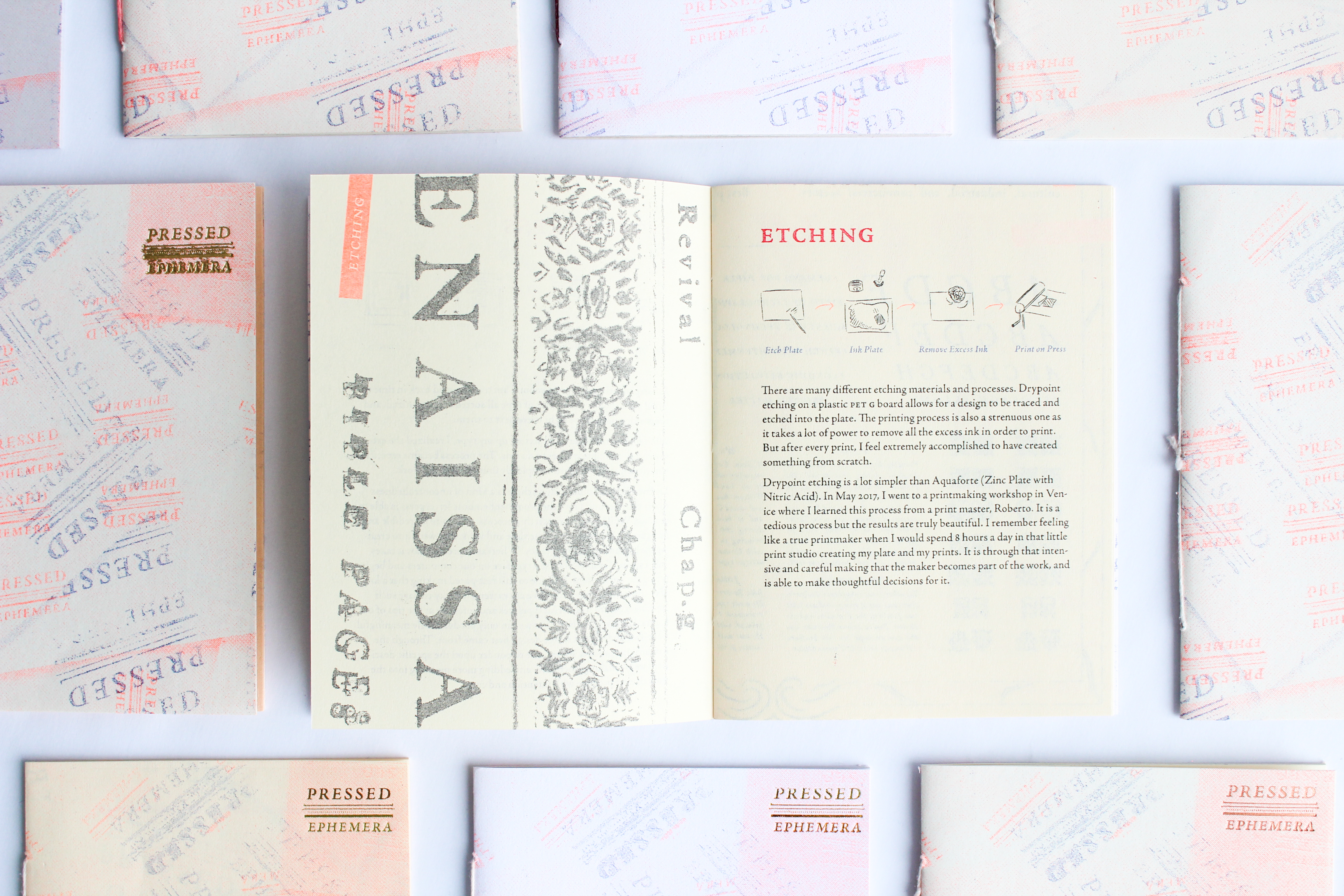



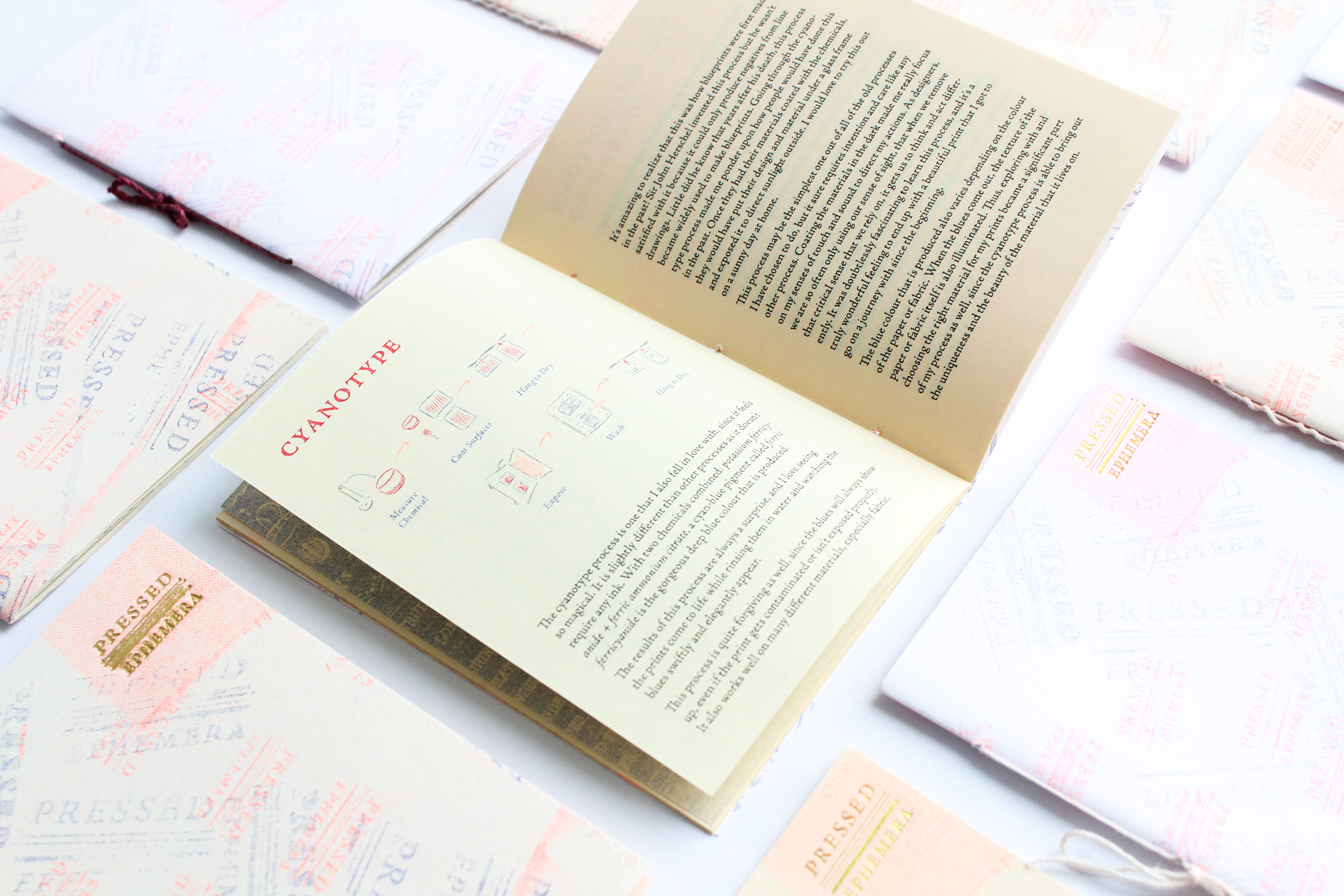
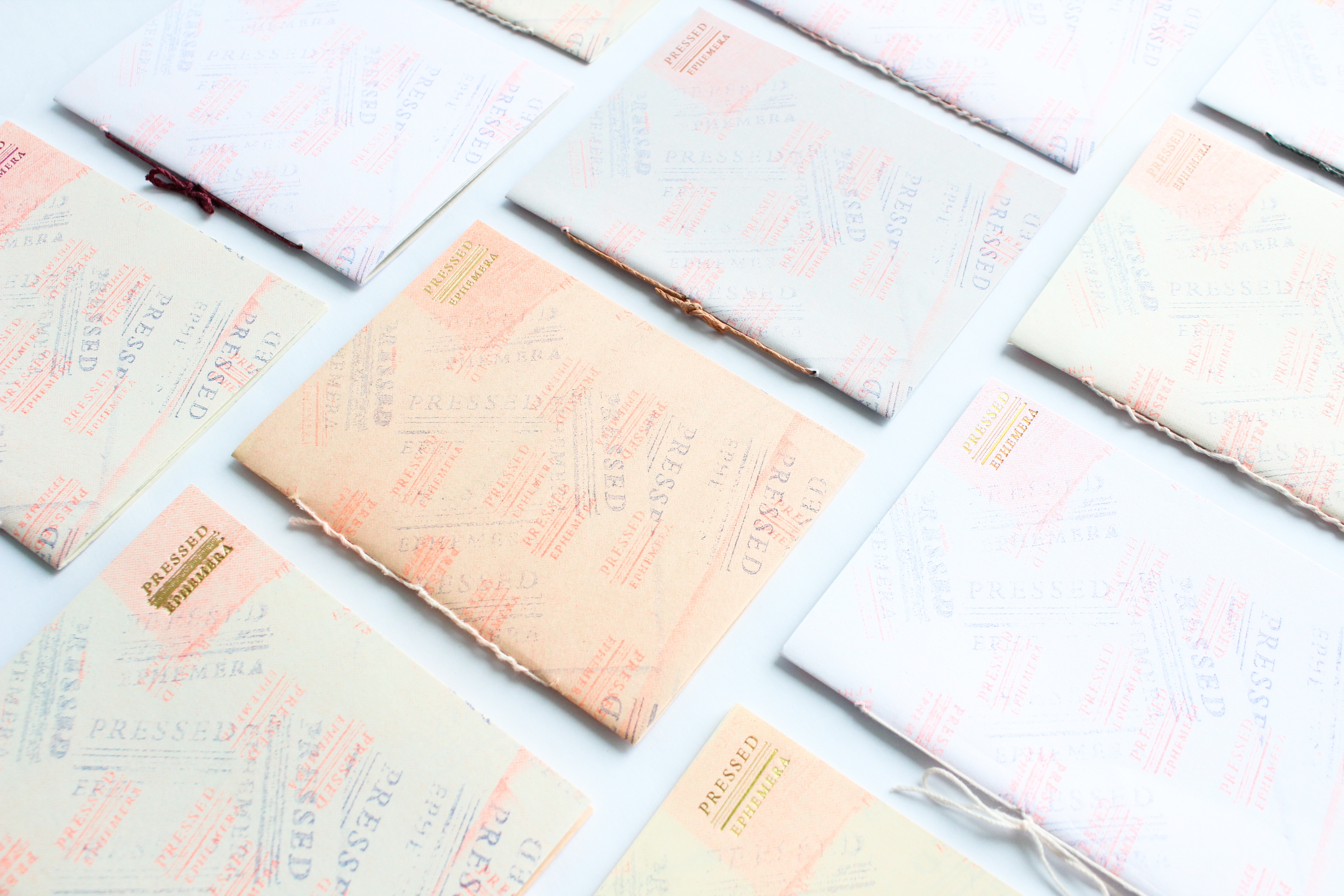
Pamphlets
The risograph pamphlets include a short introduction to my project. All of the resources I used are numbered in there for anyone who is interested to explore more. These were meant to be at my exhibition for people to look at when they would approach my project. The pamphlets are stamped with a variety of beautiful metallic foils!


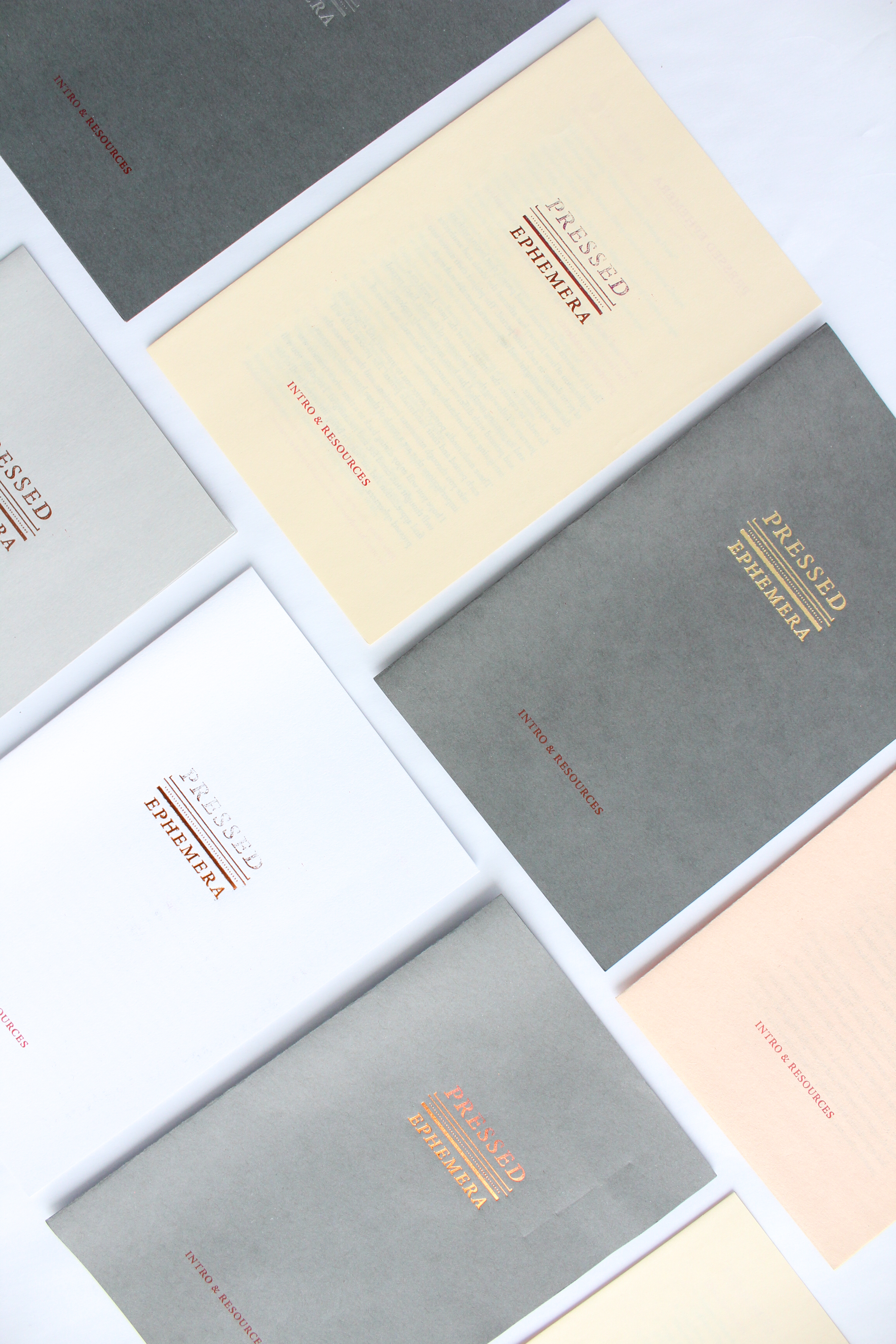
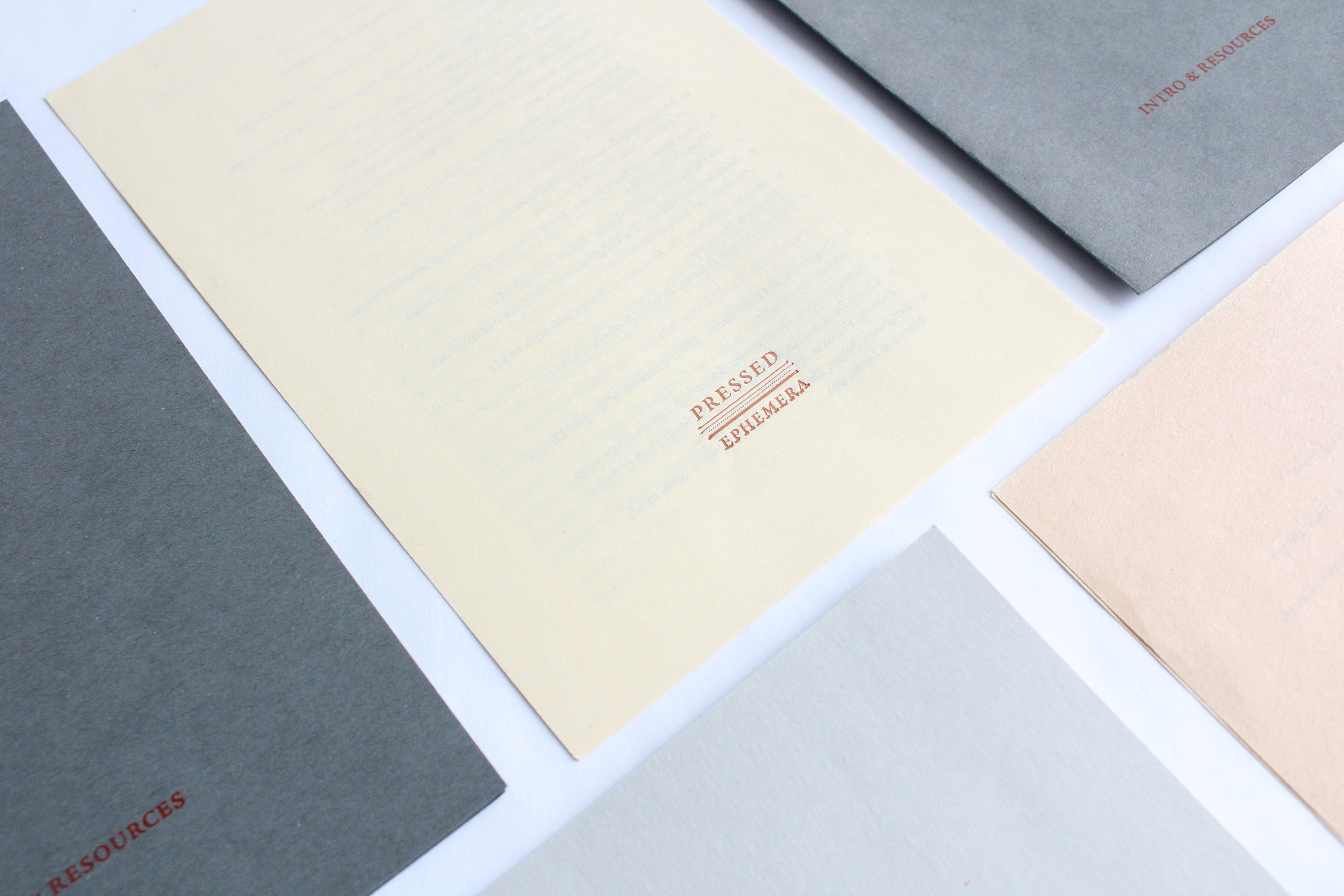
© 2025 · Christine Fwu